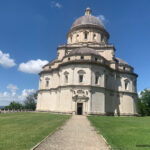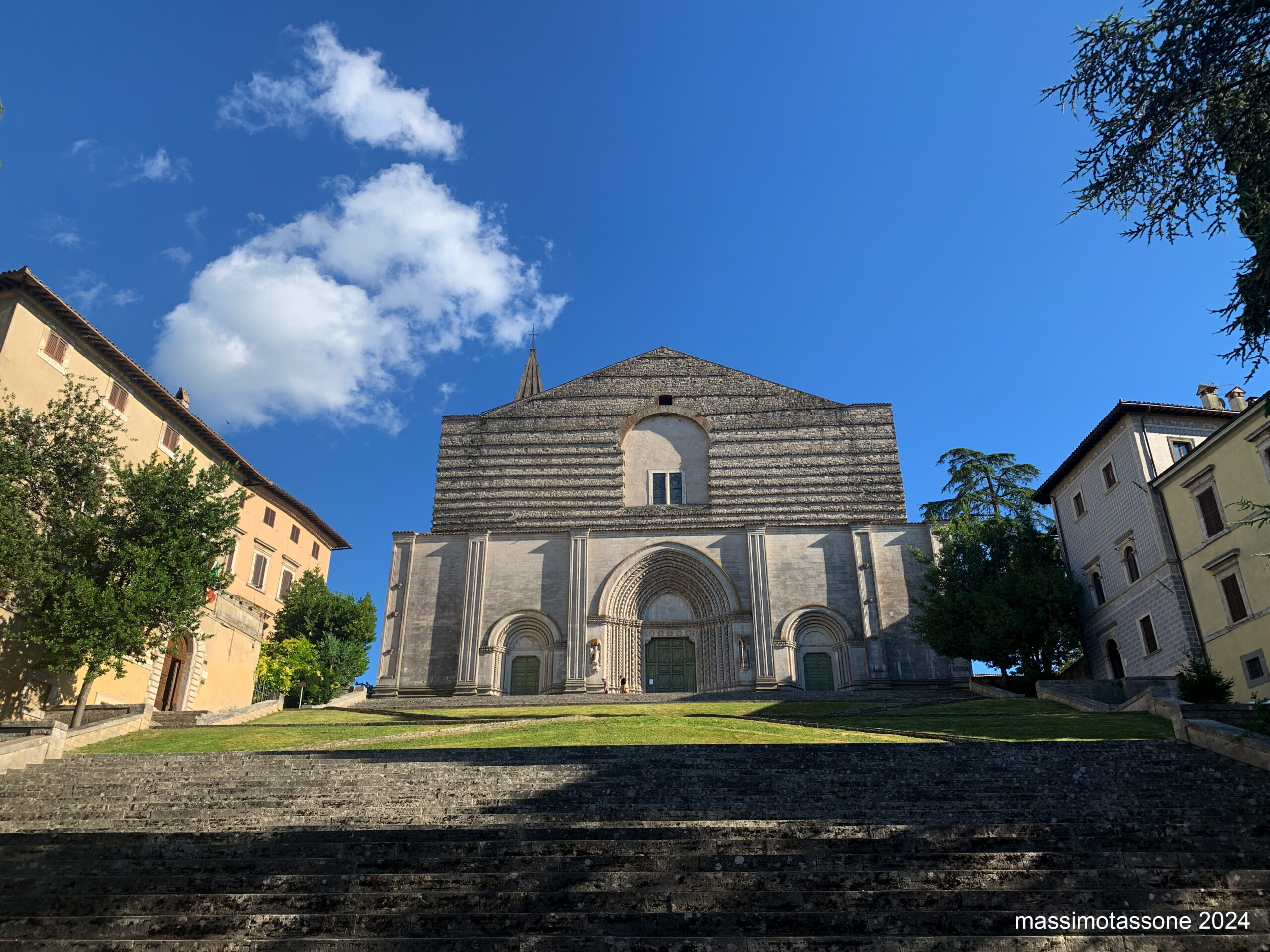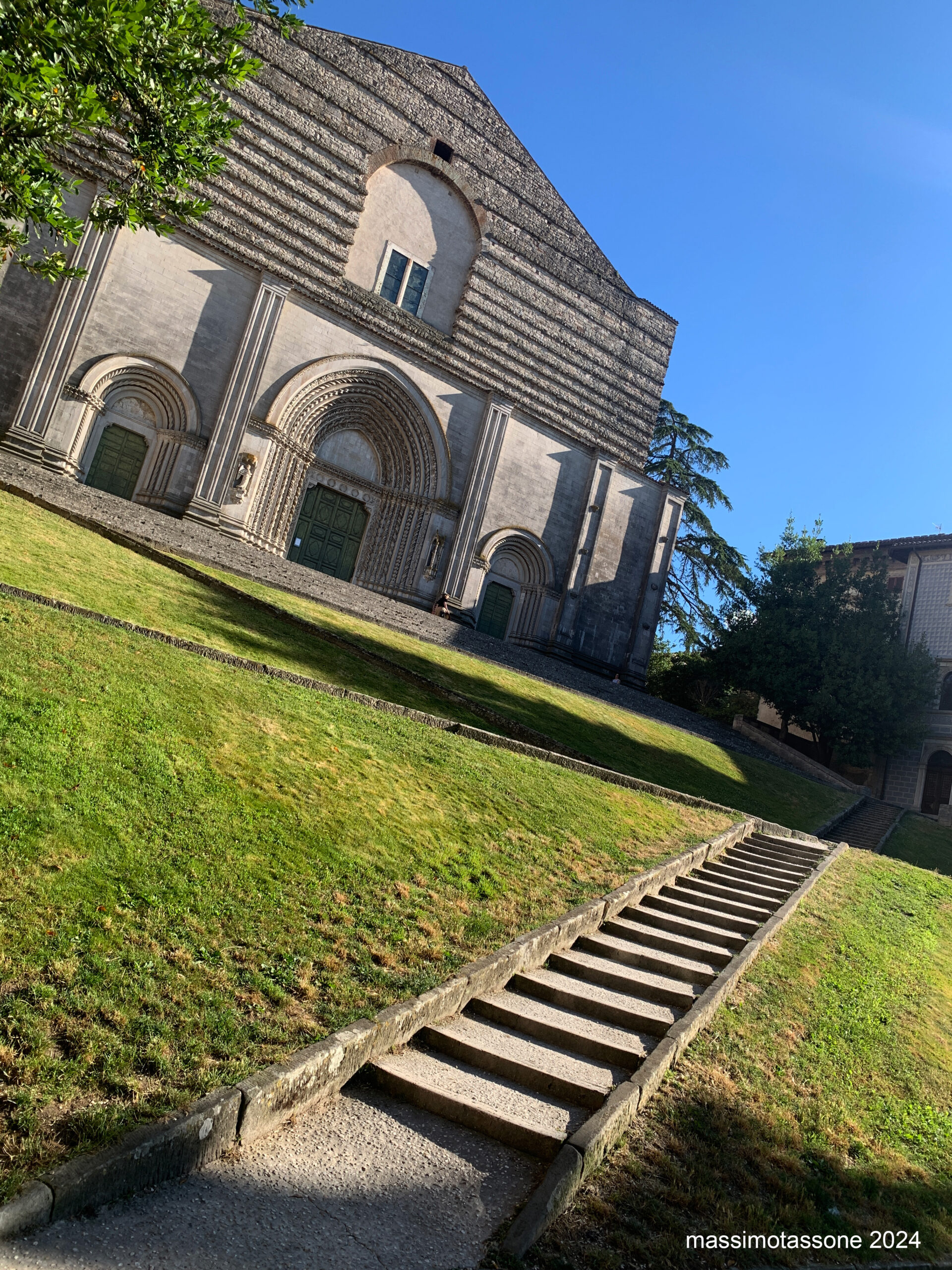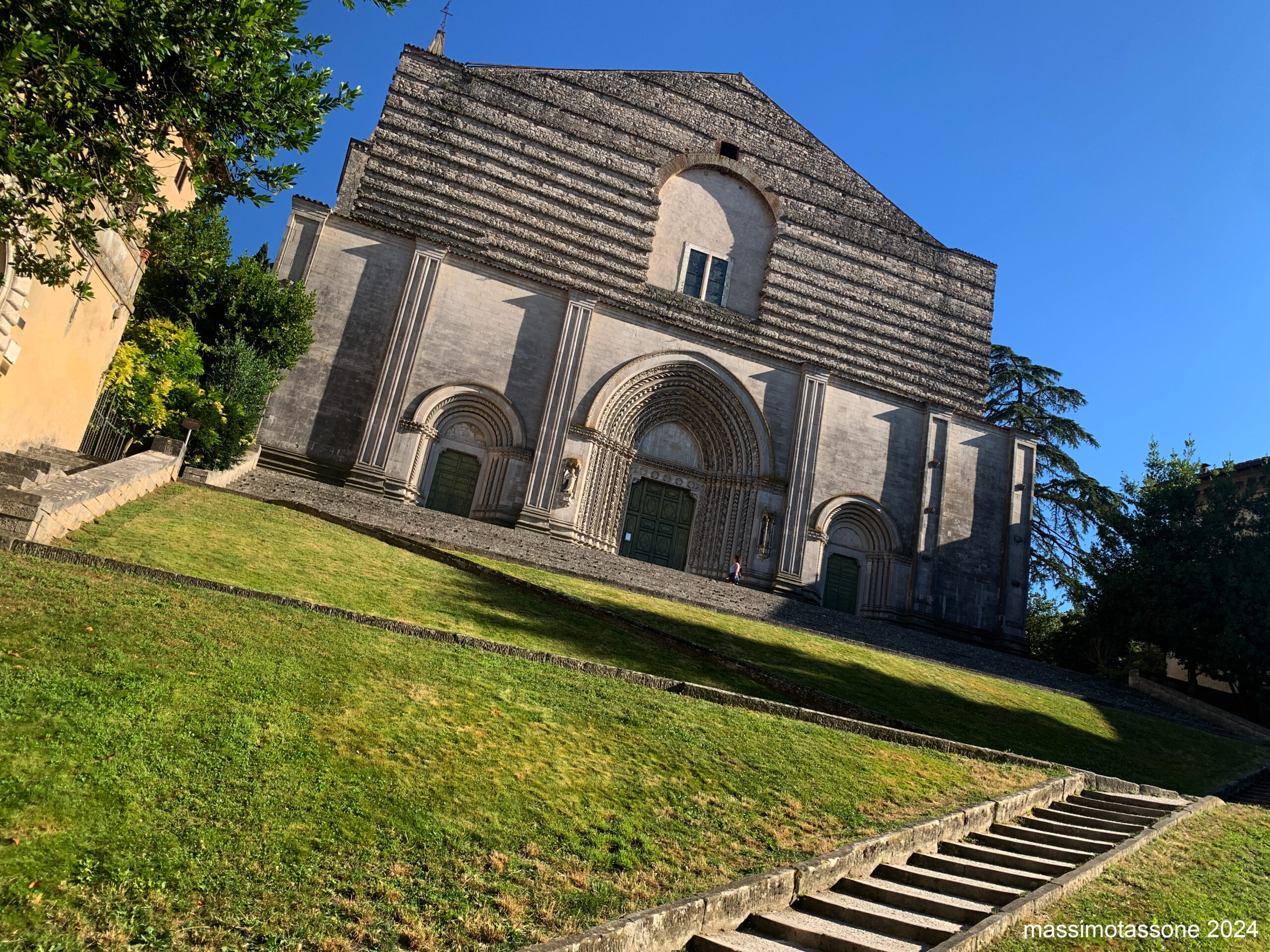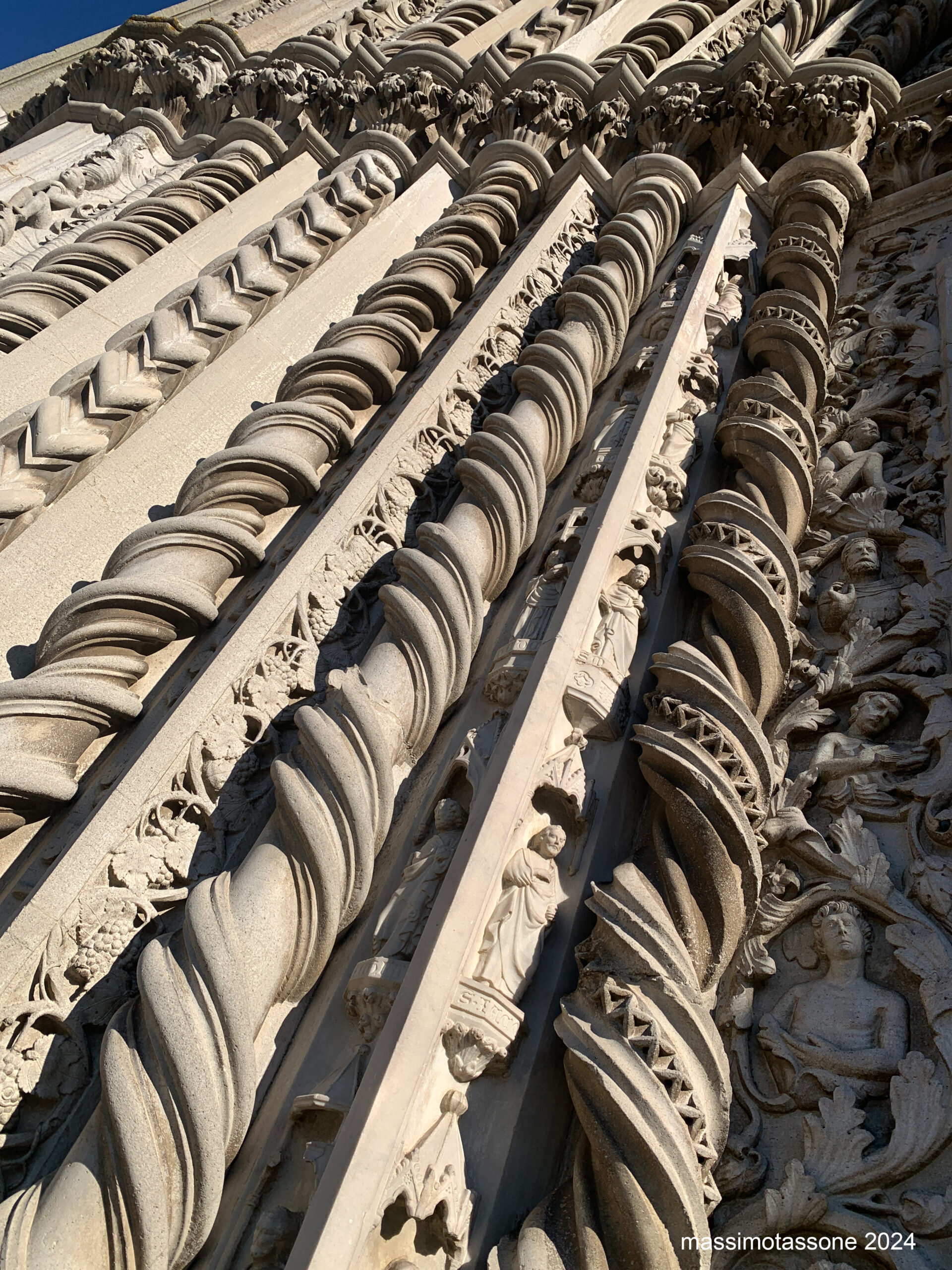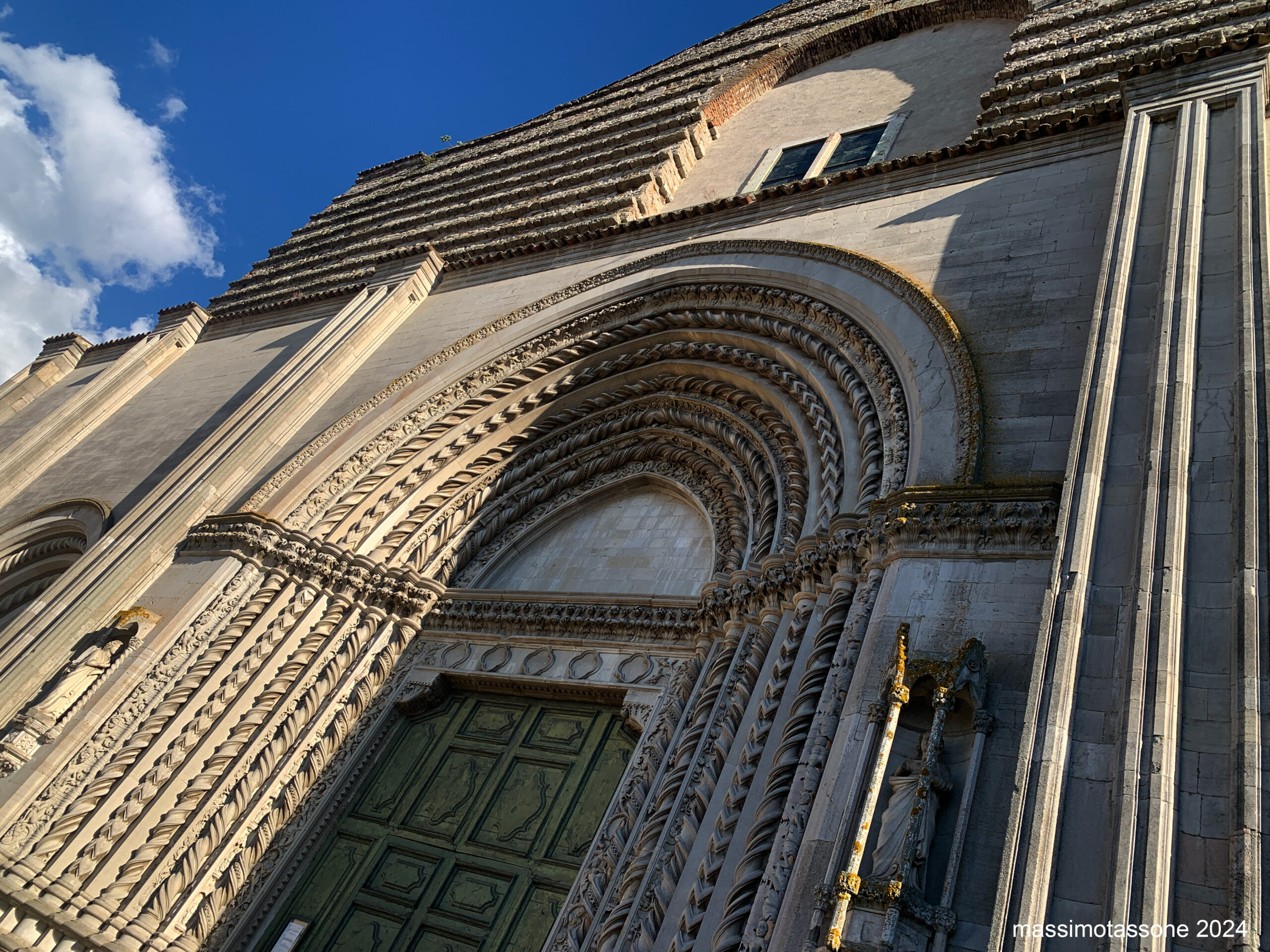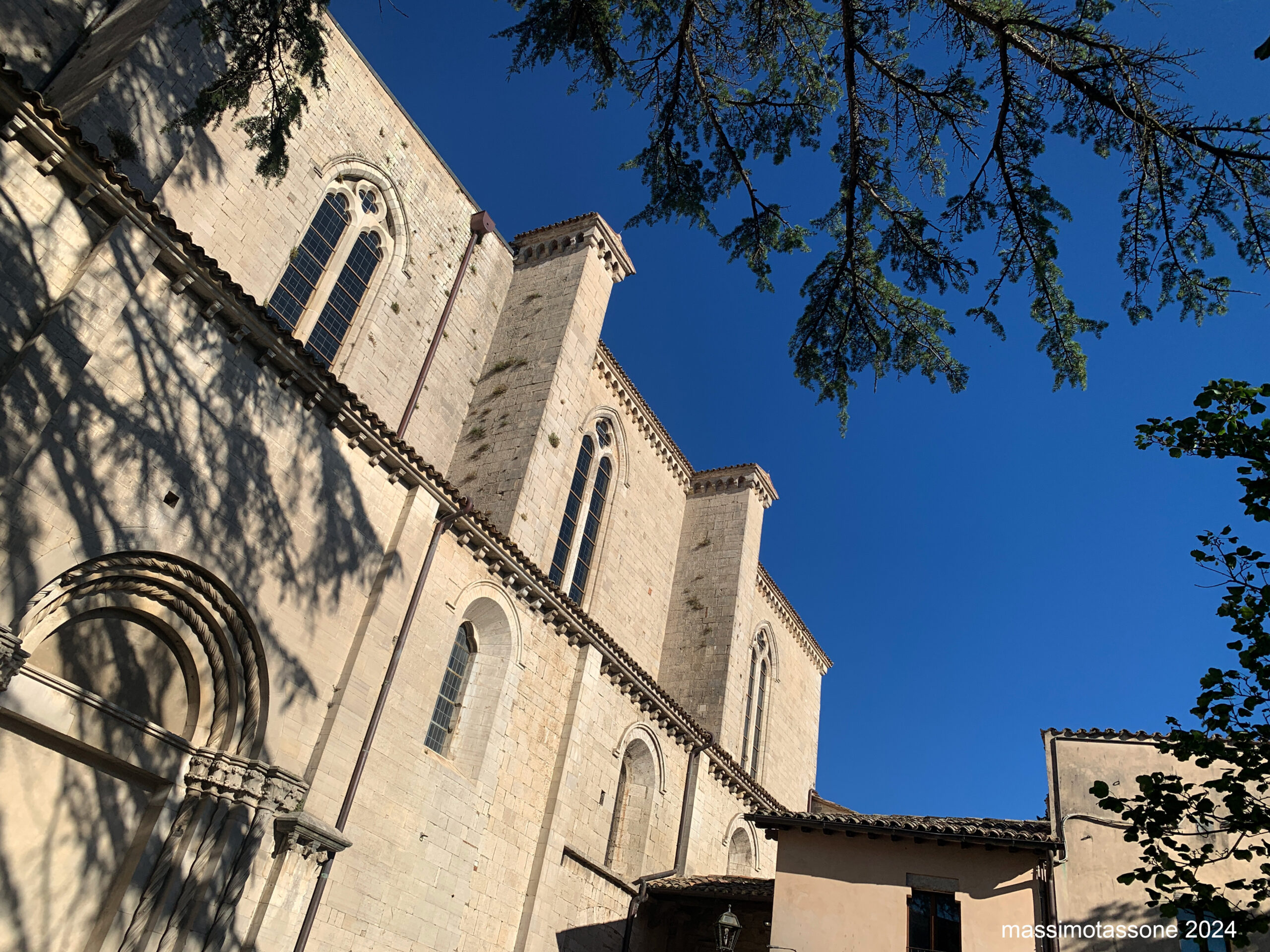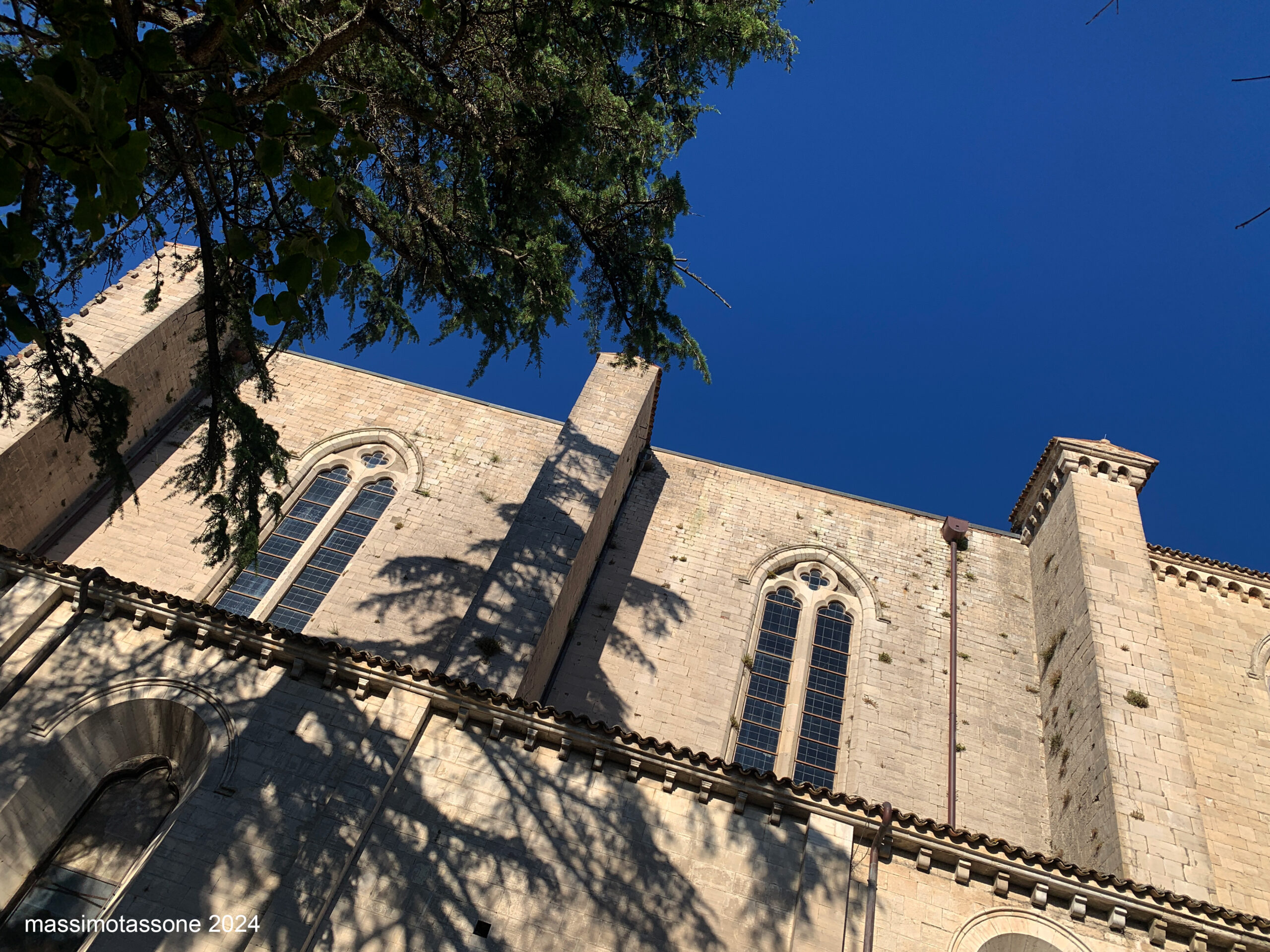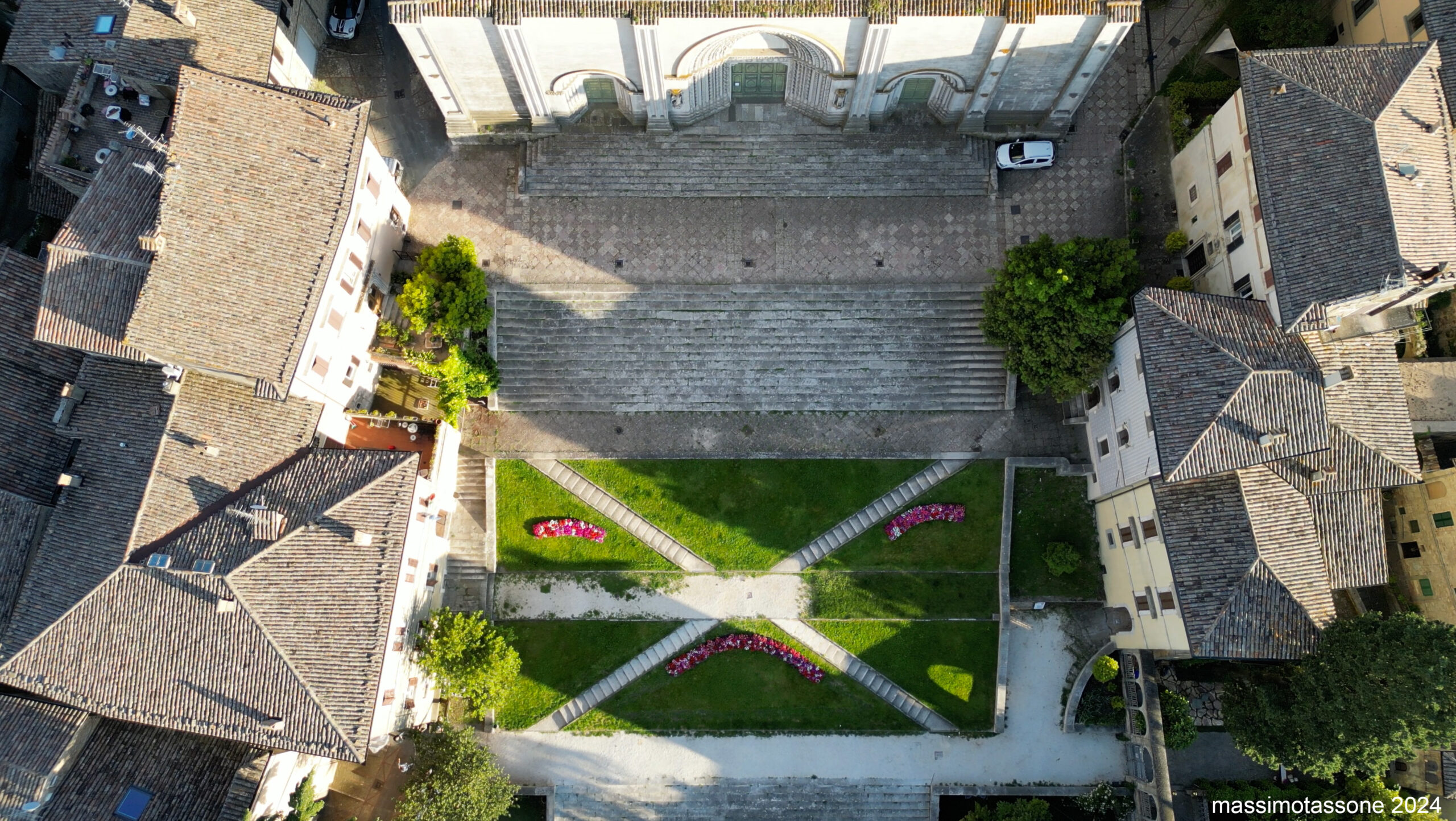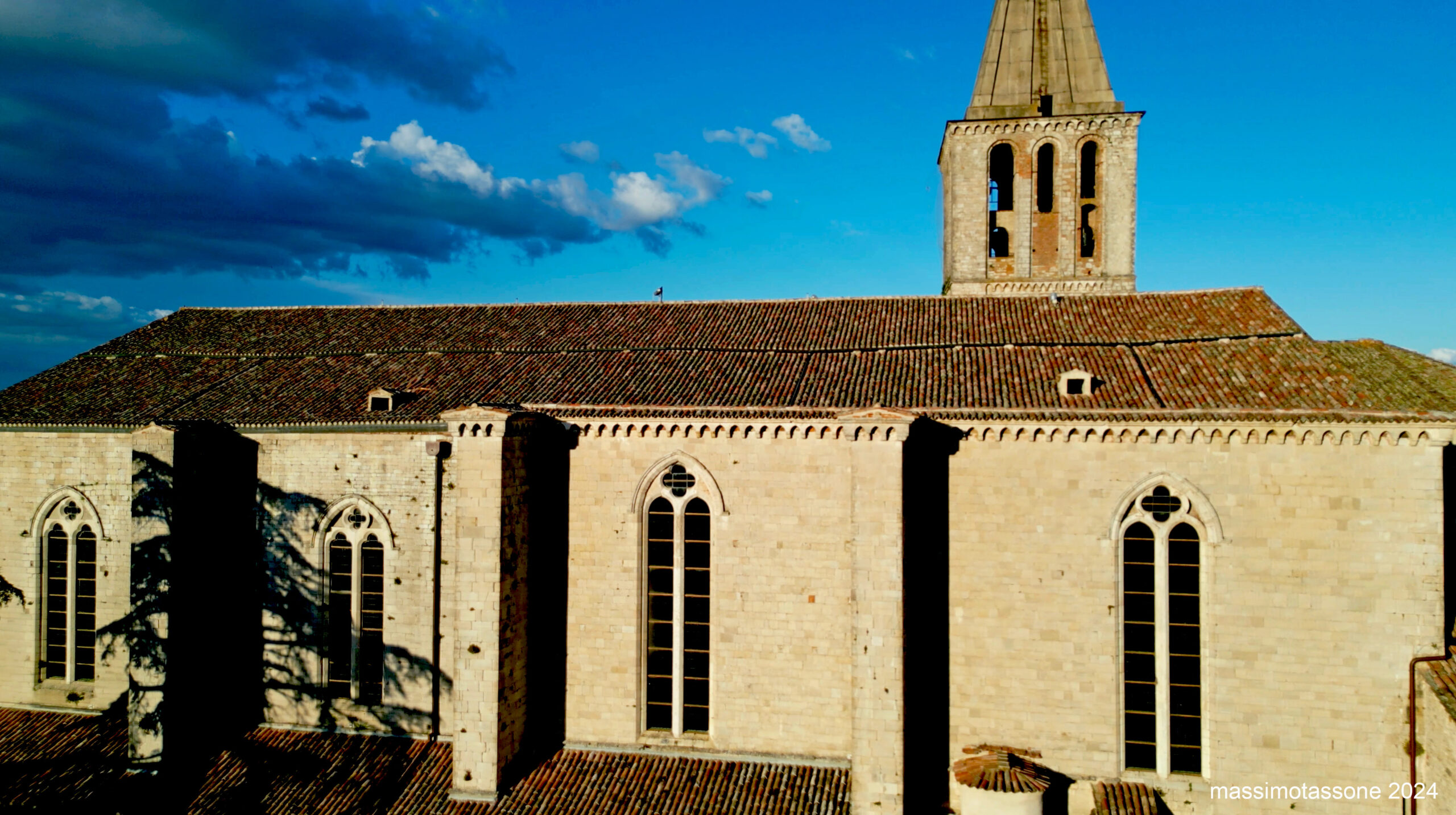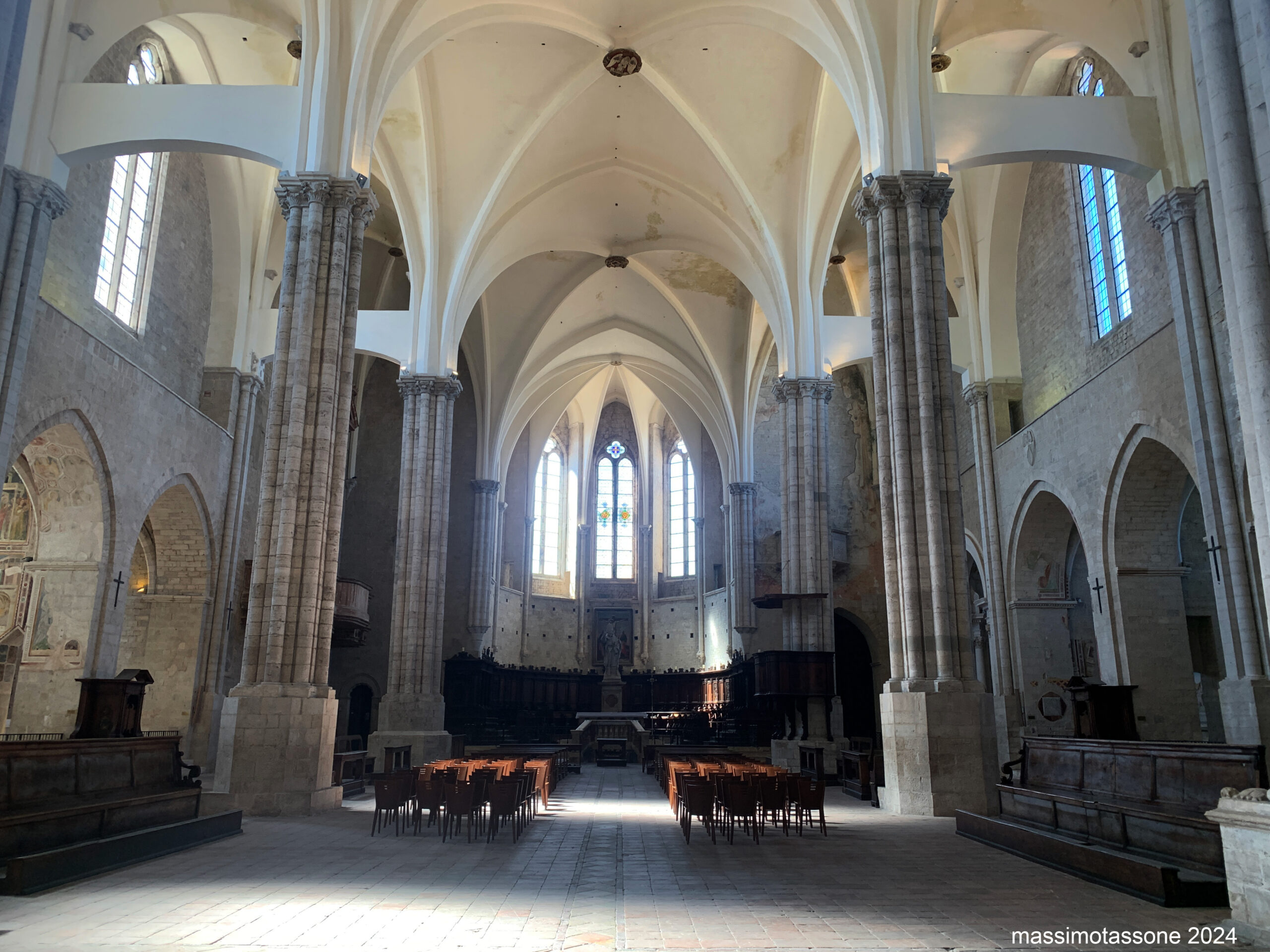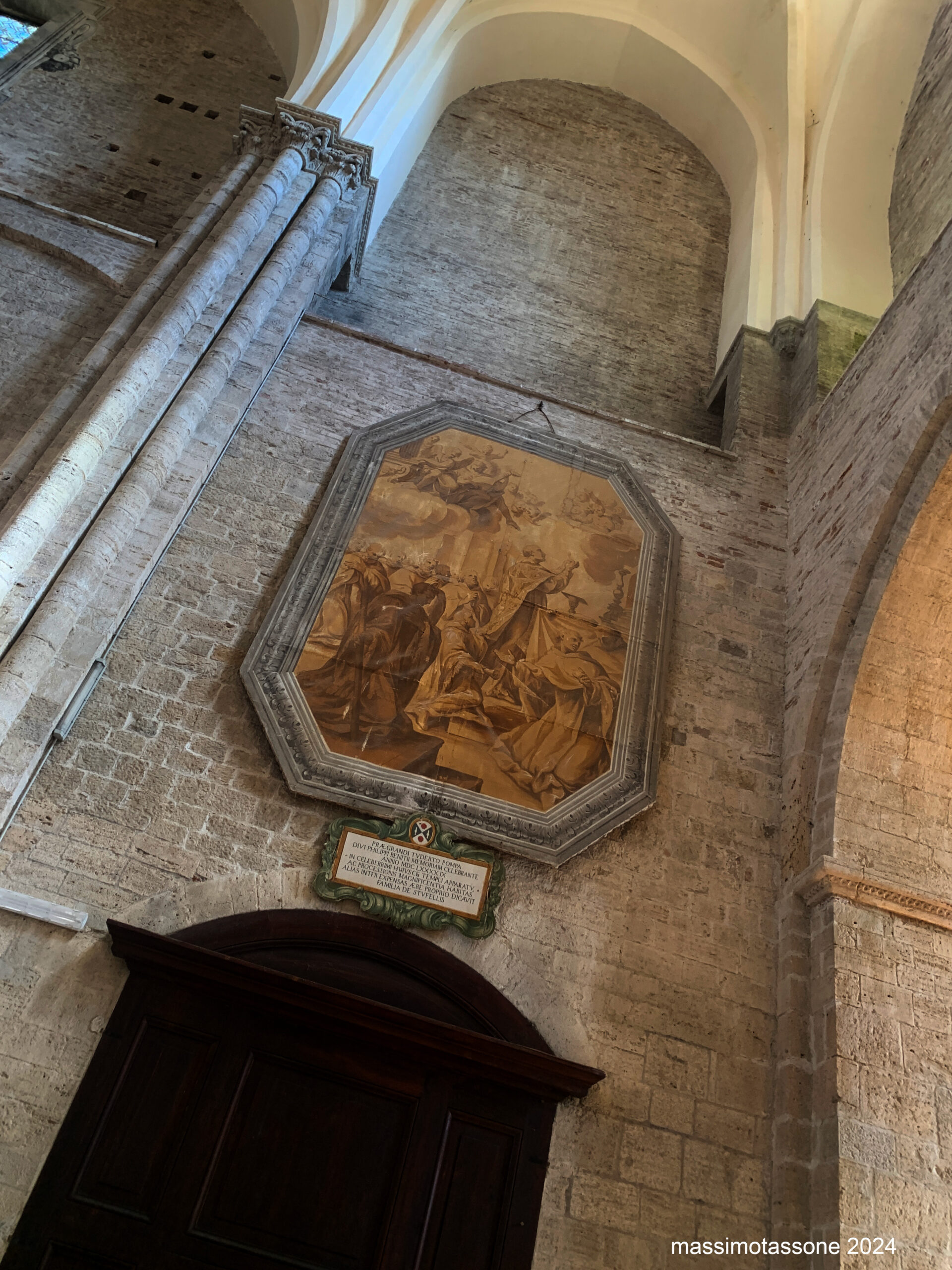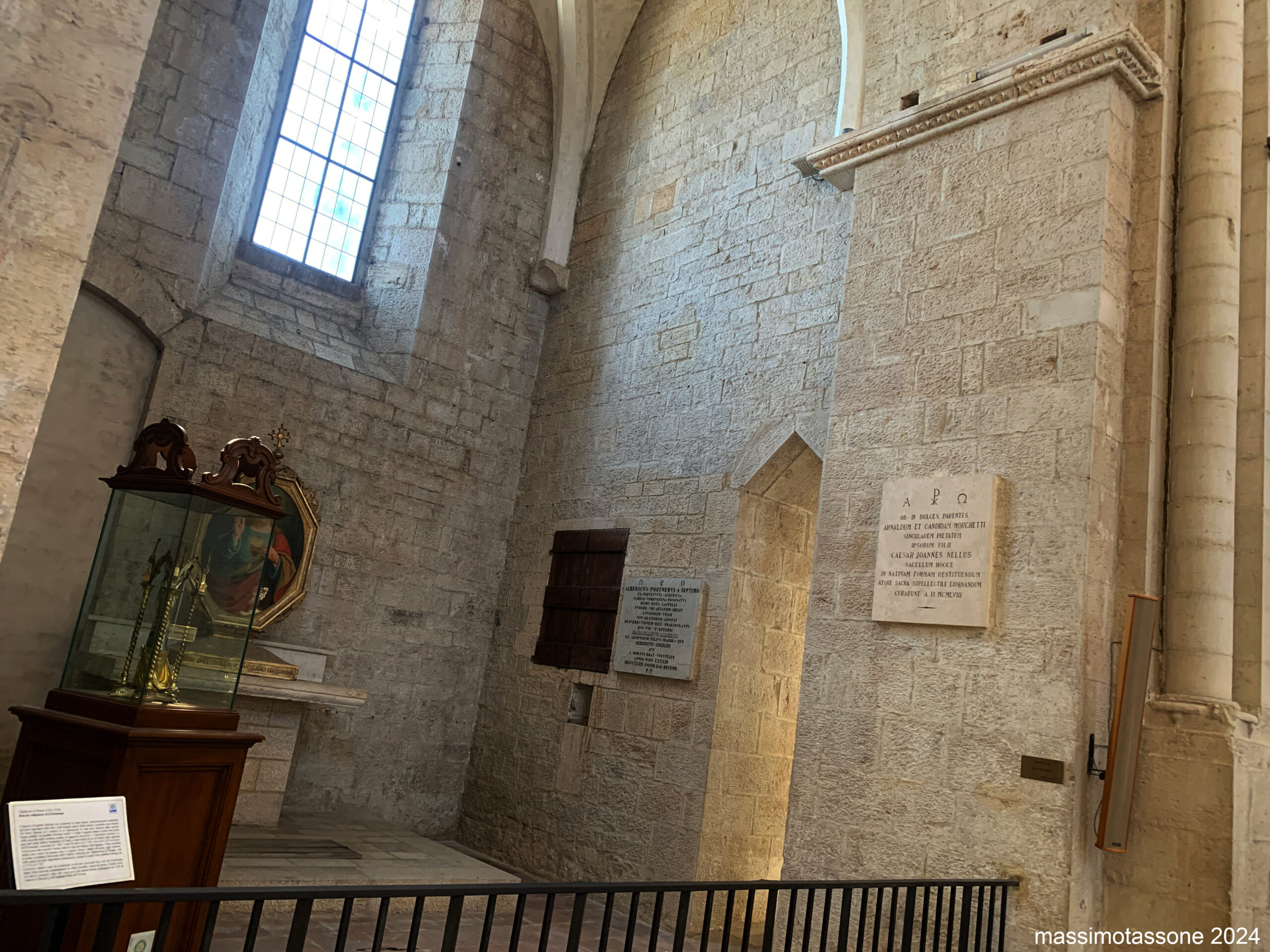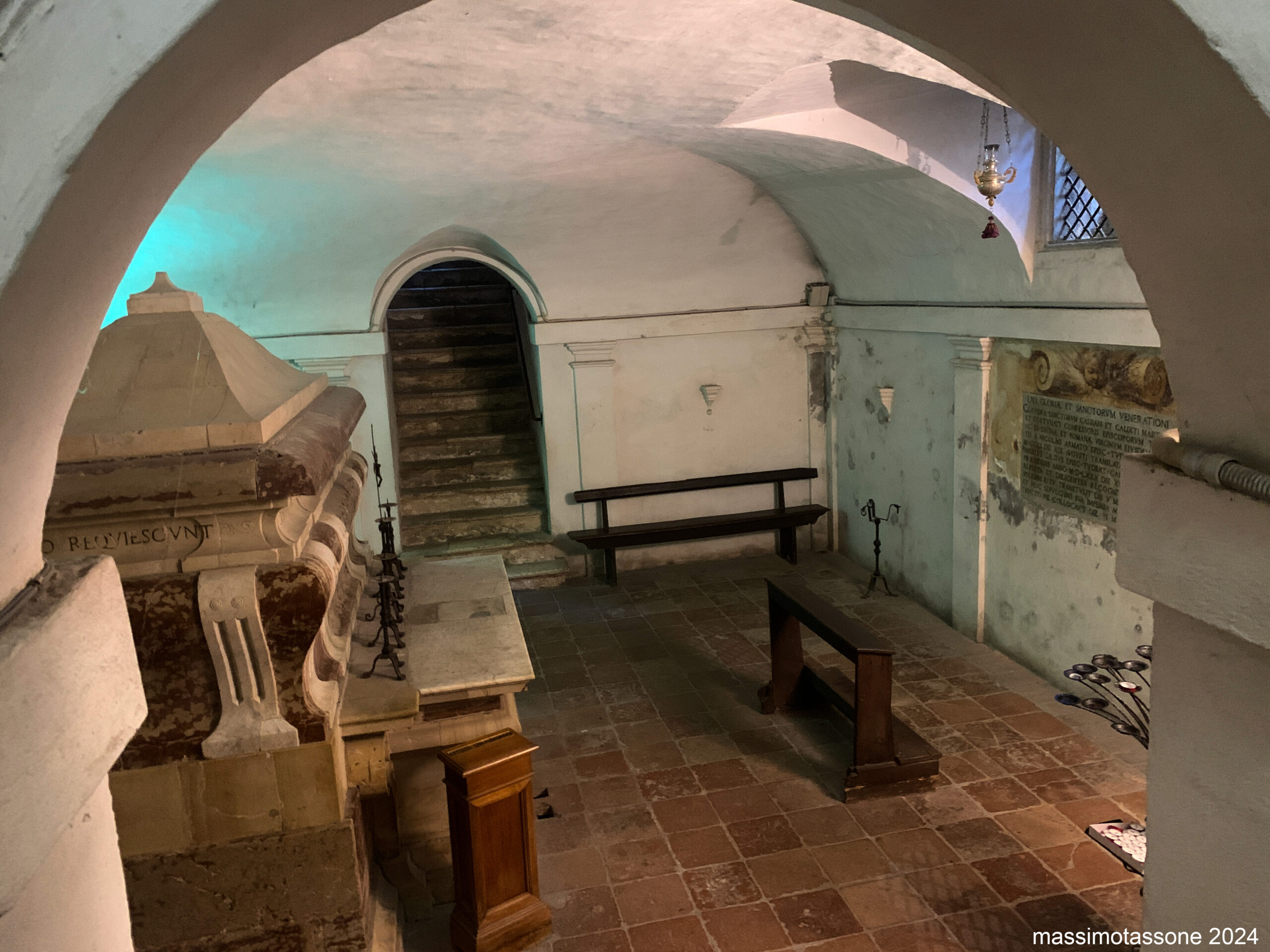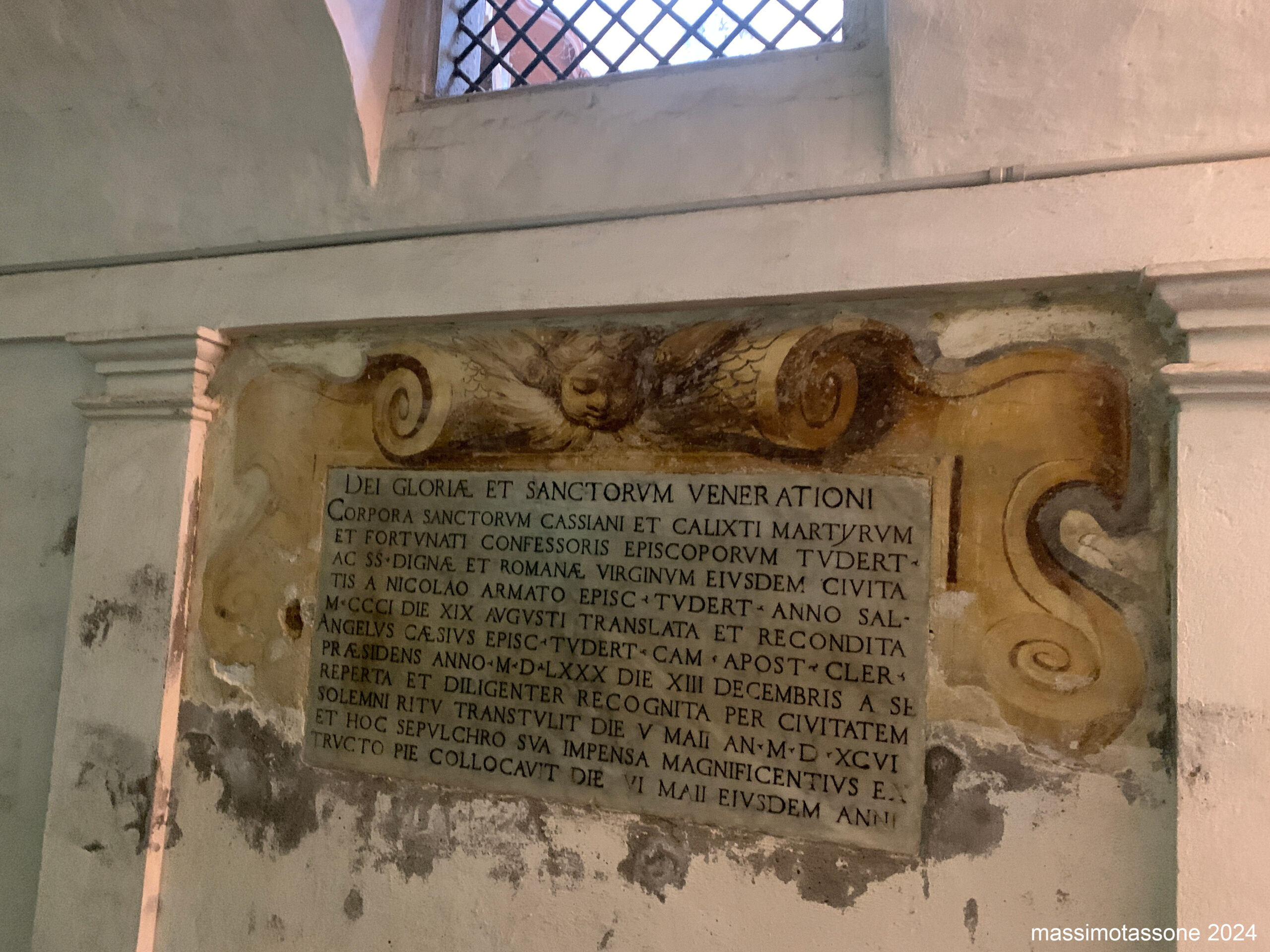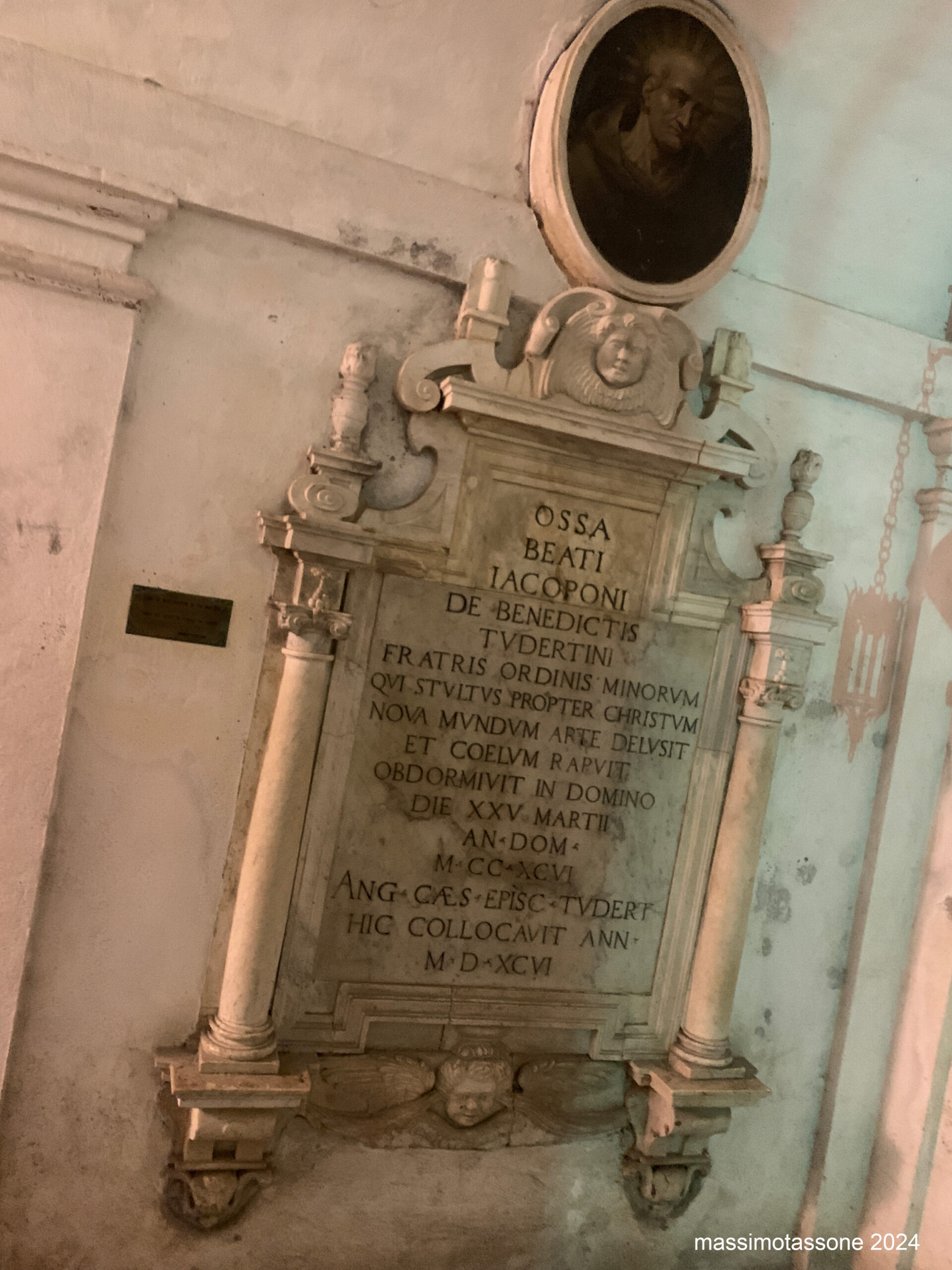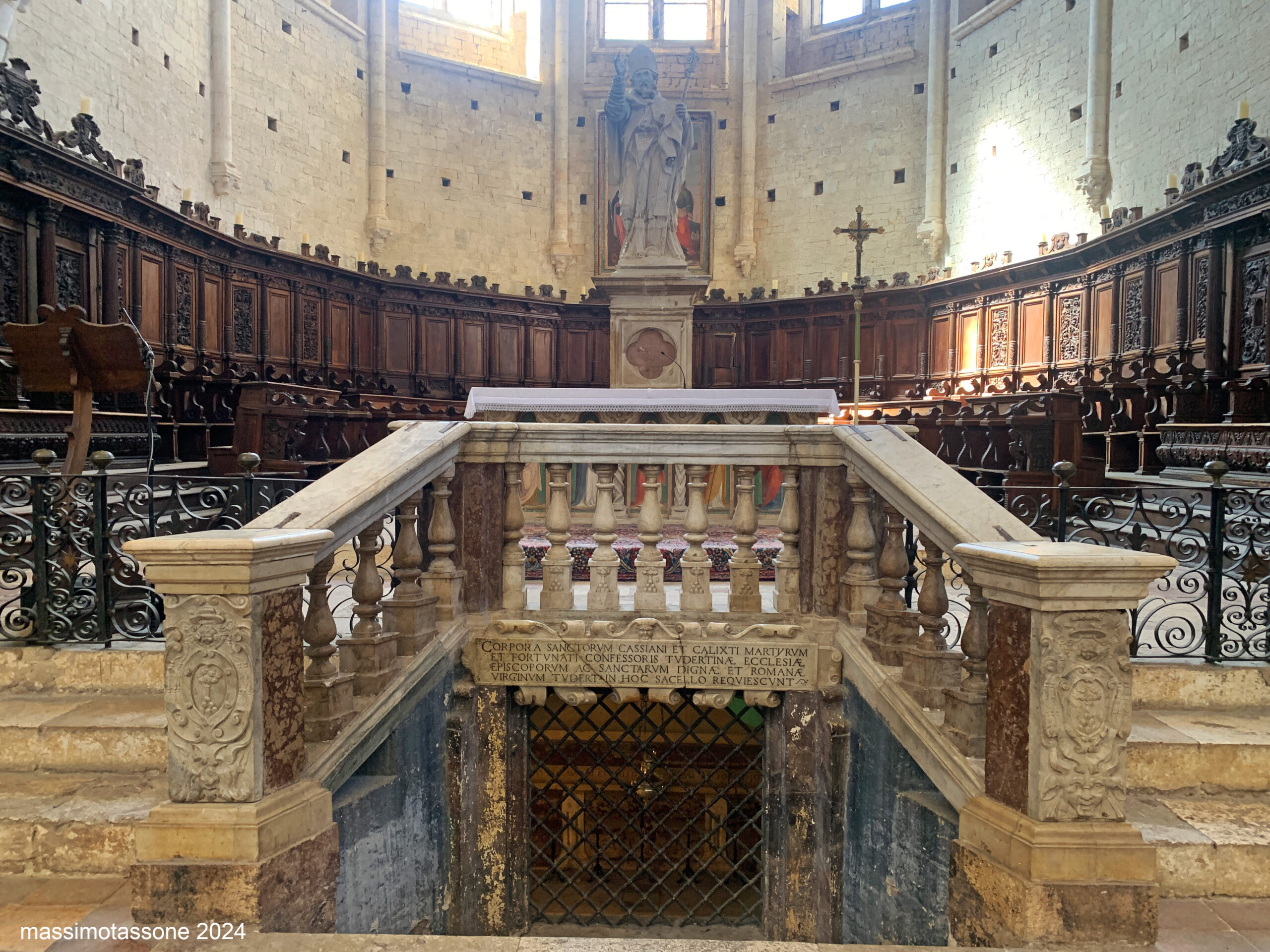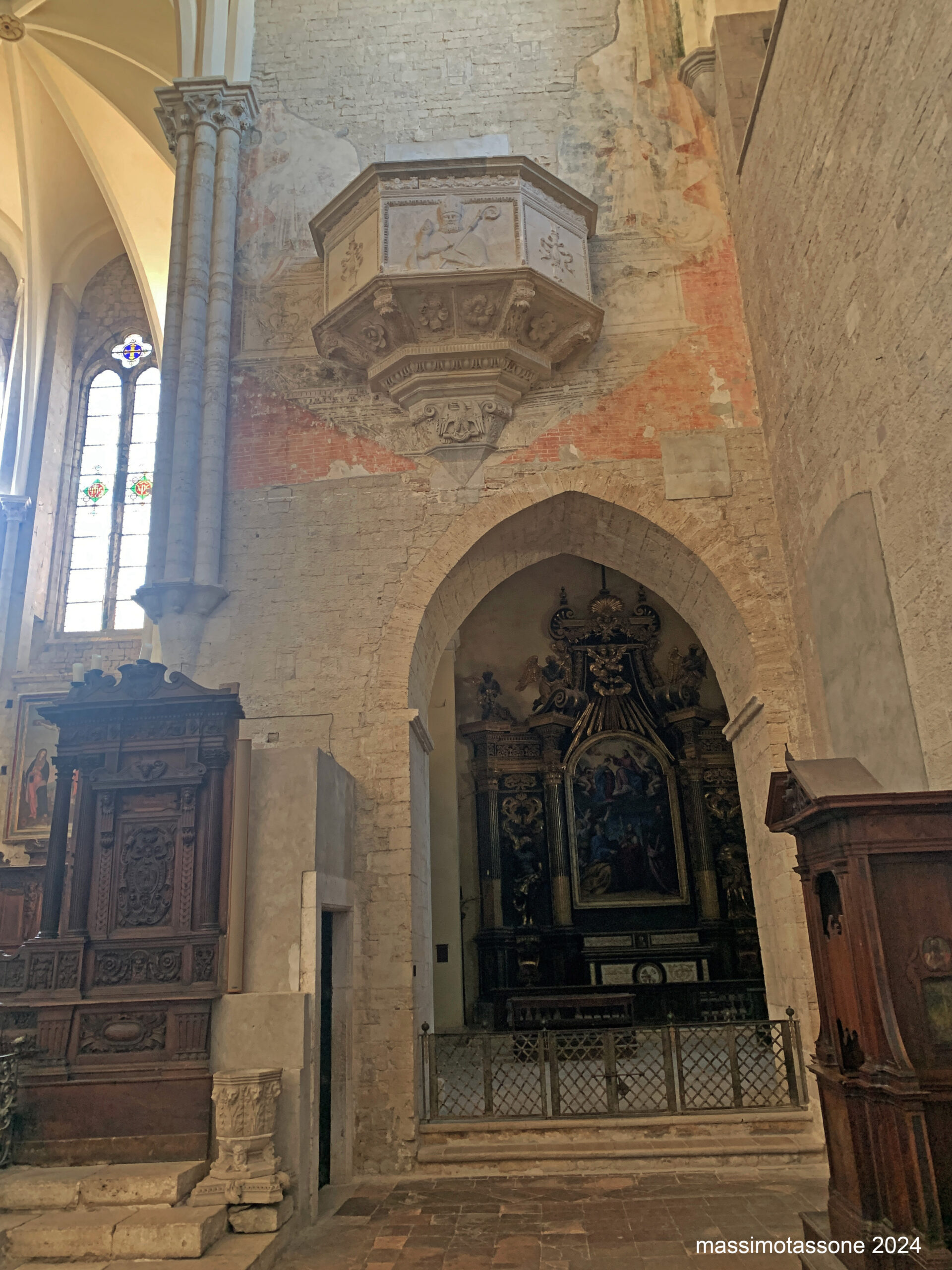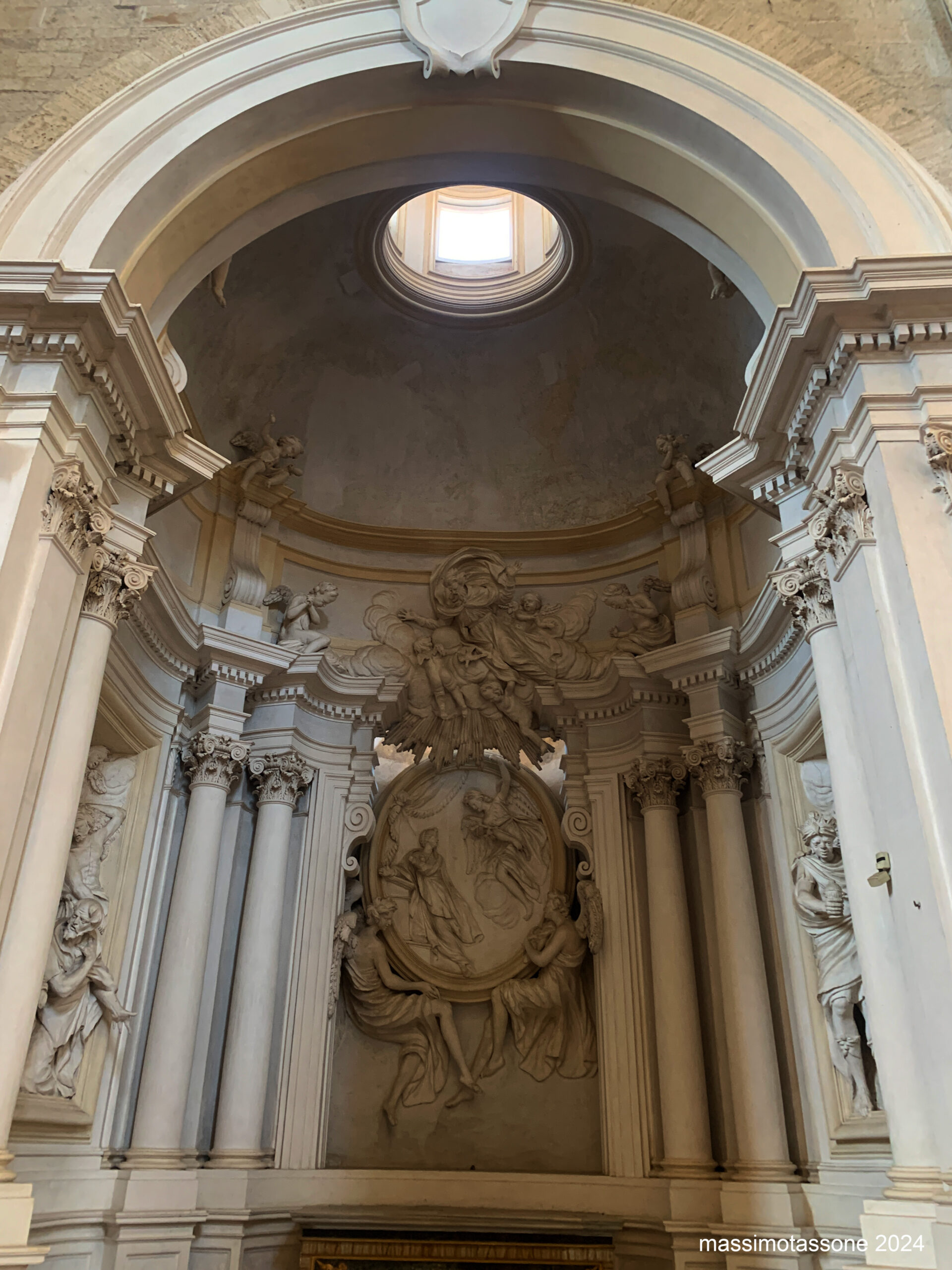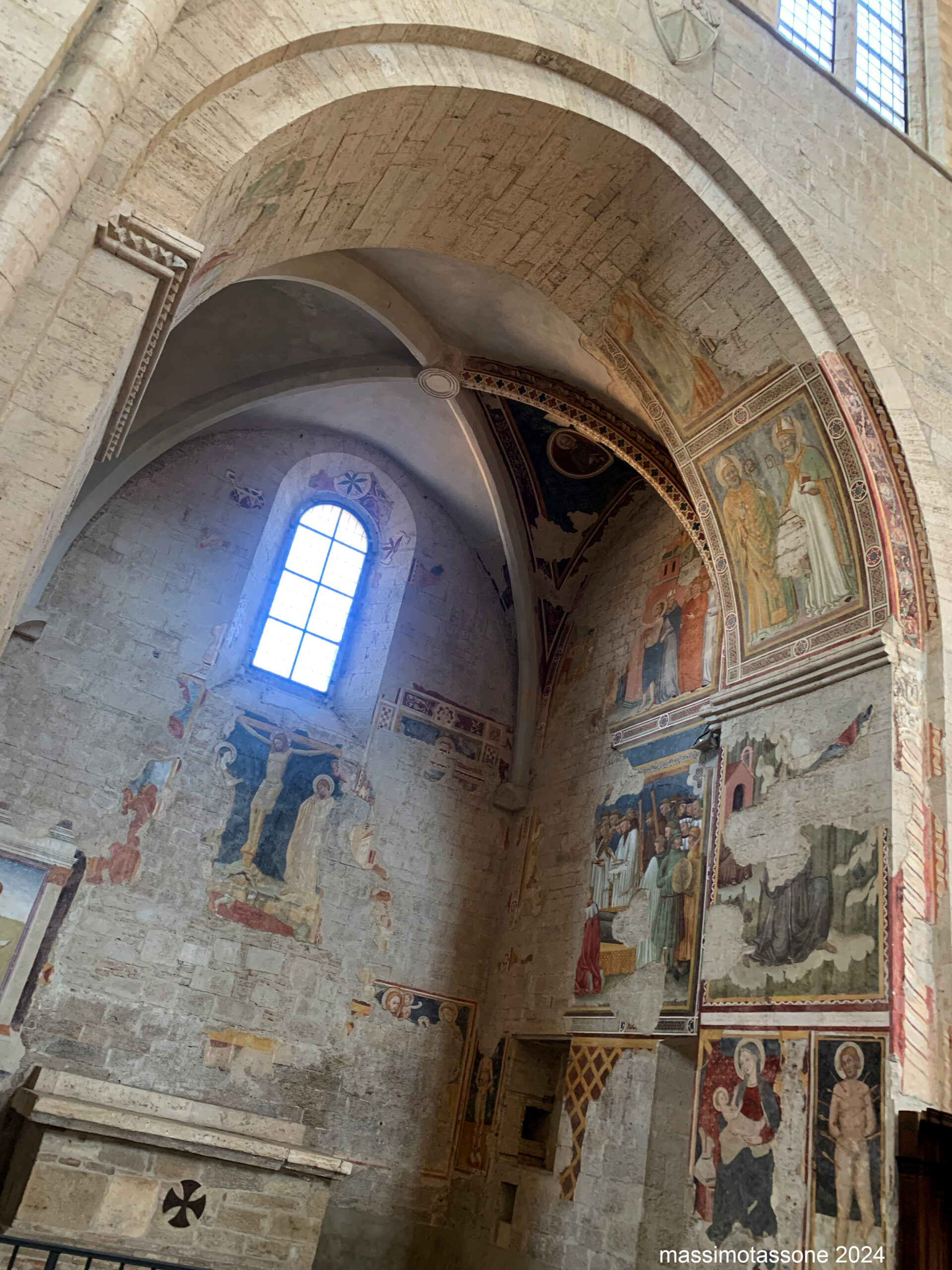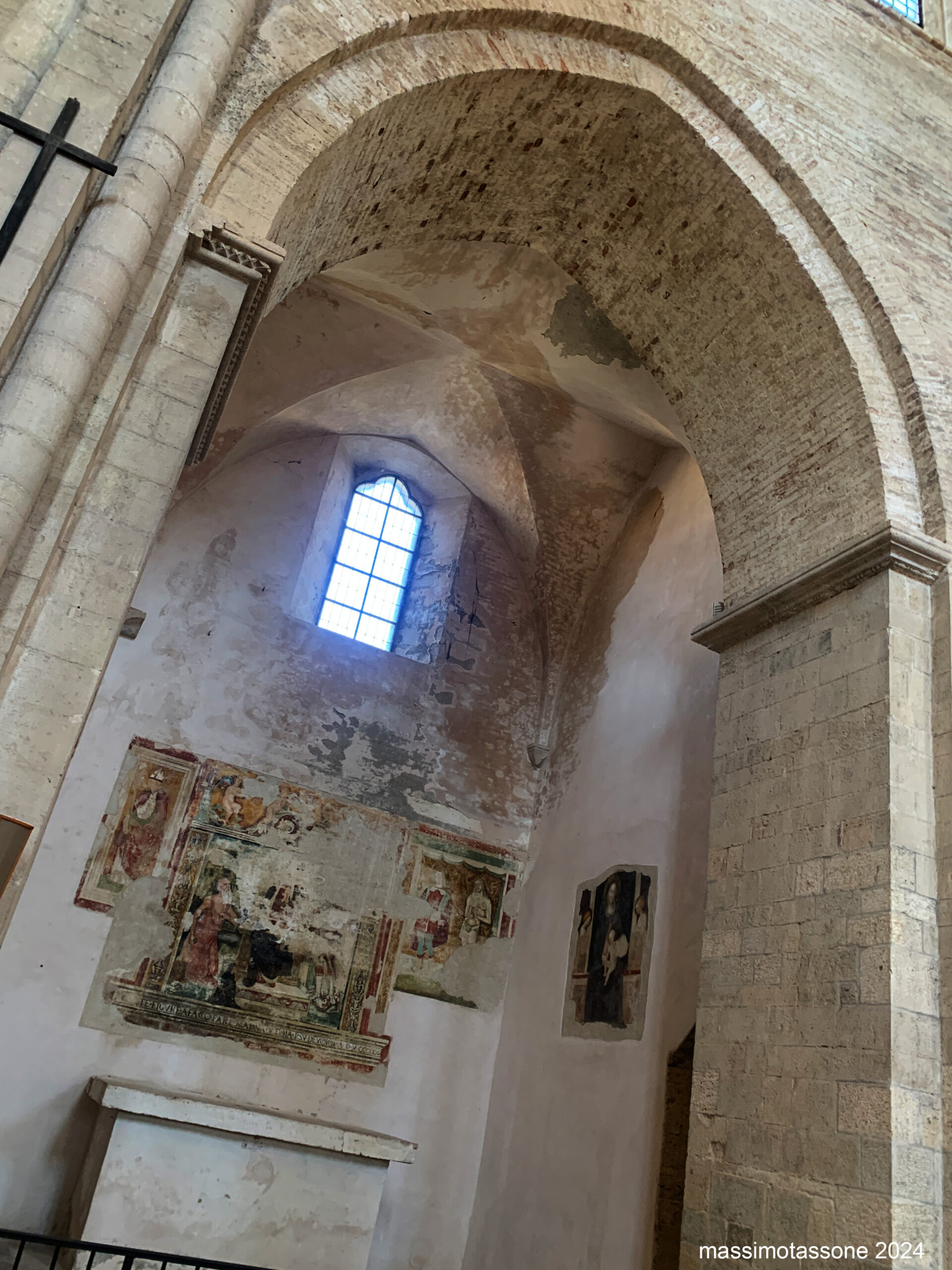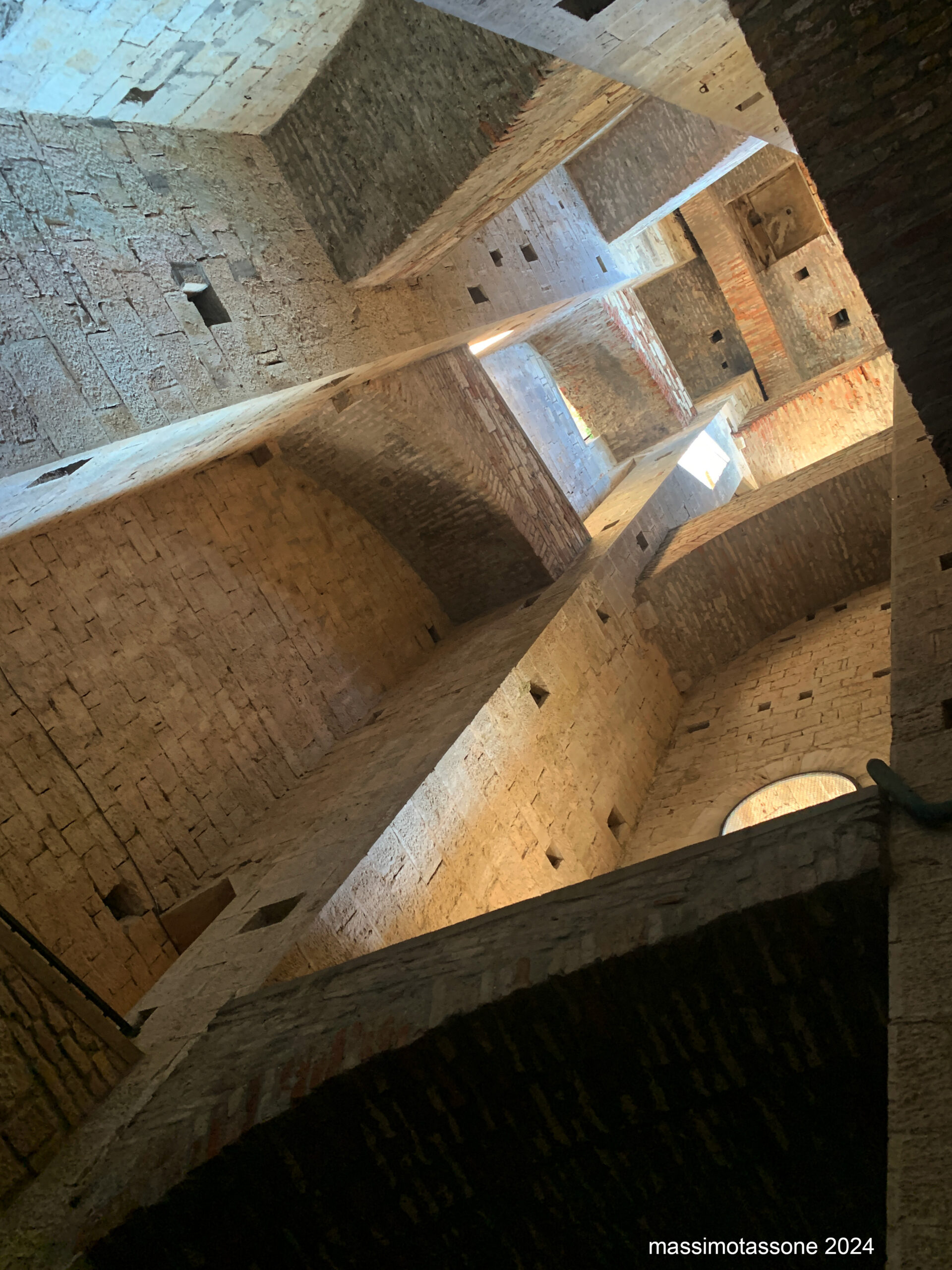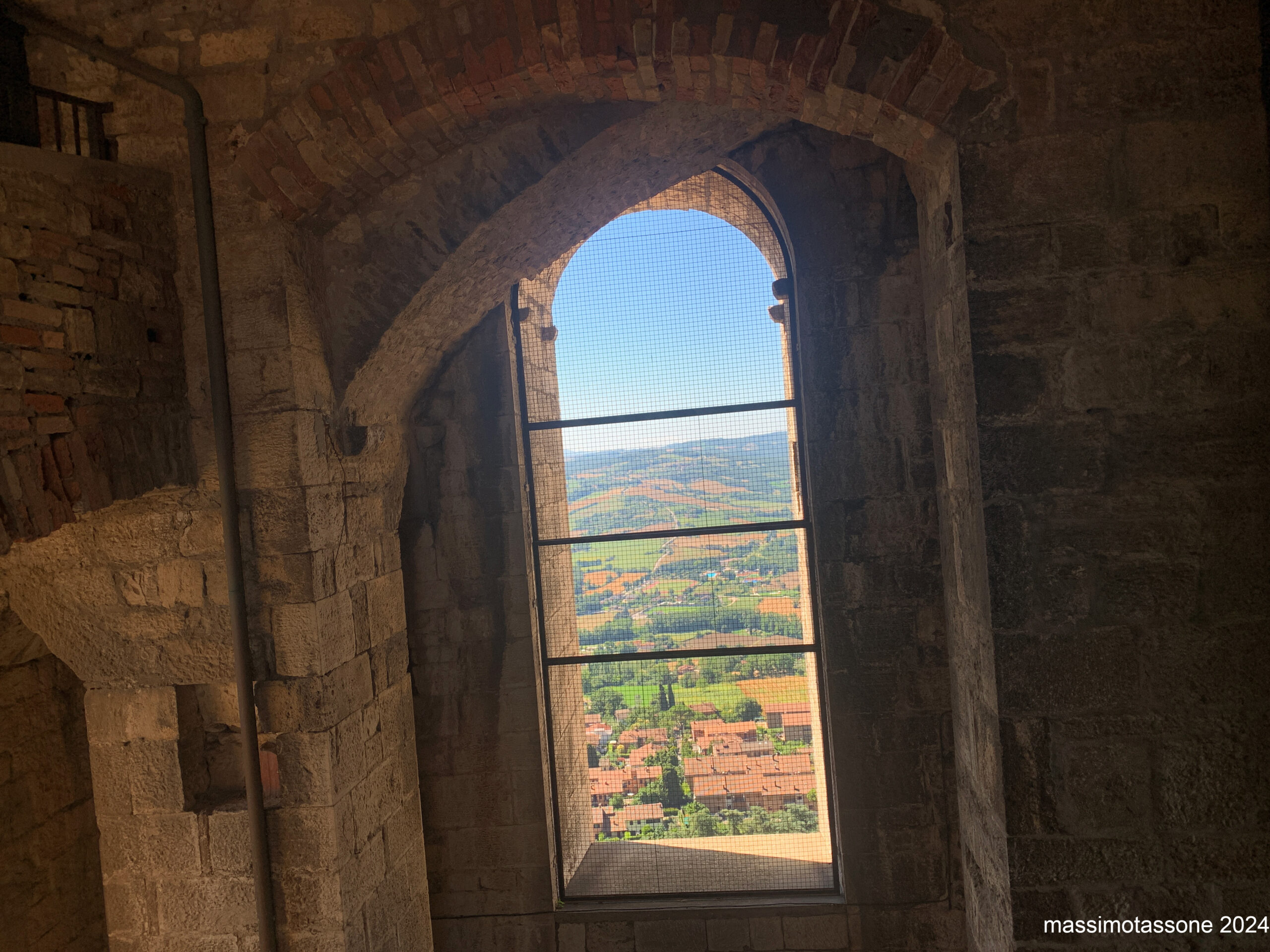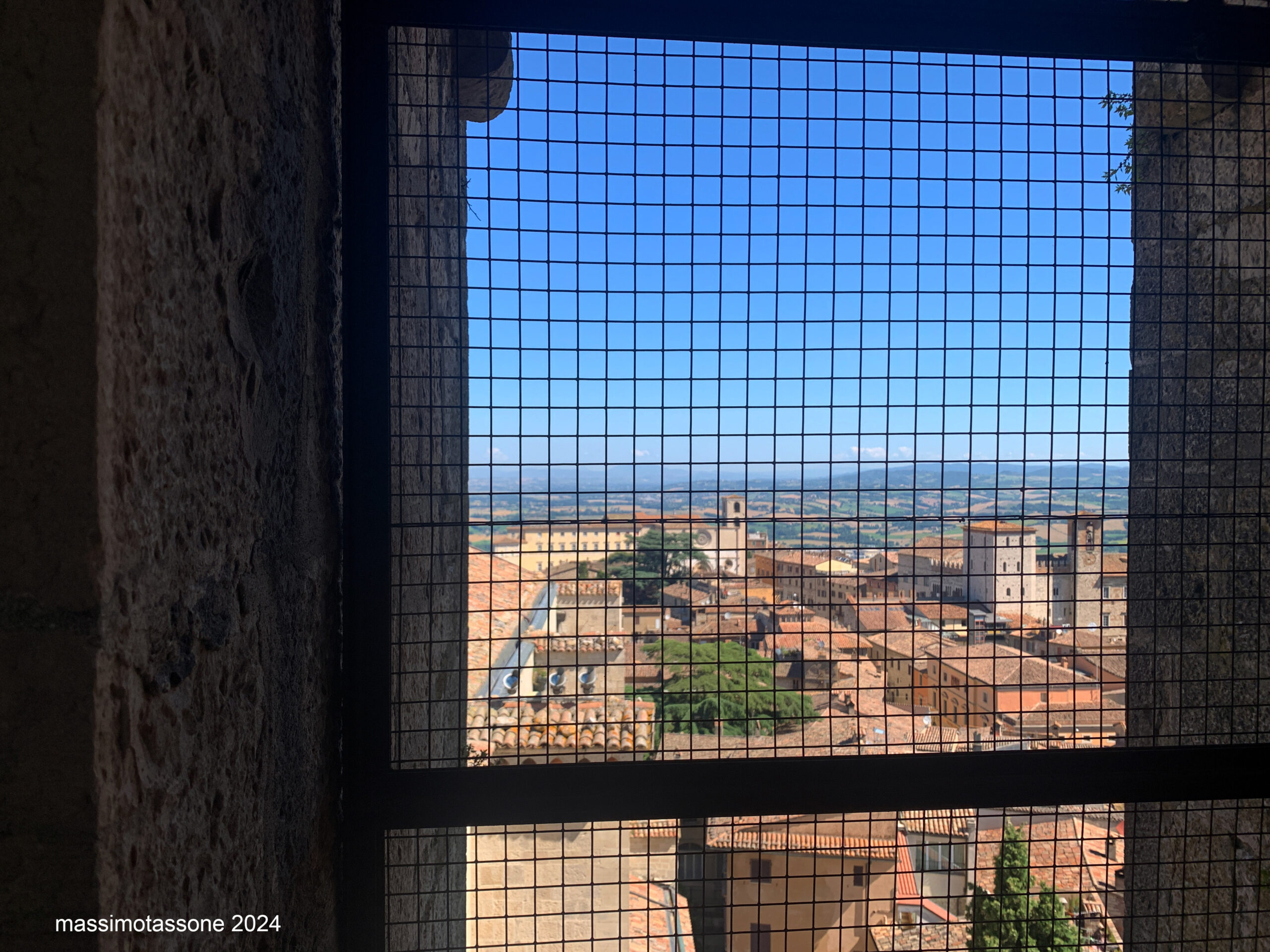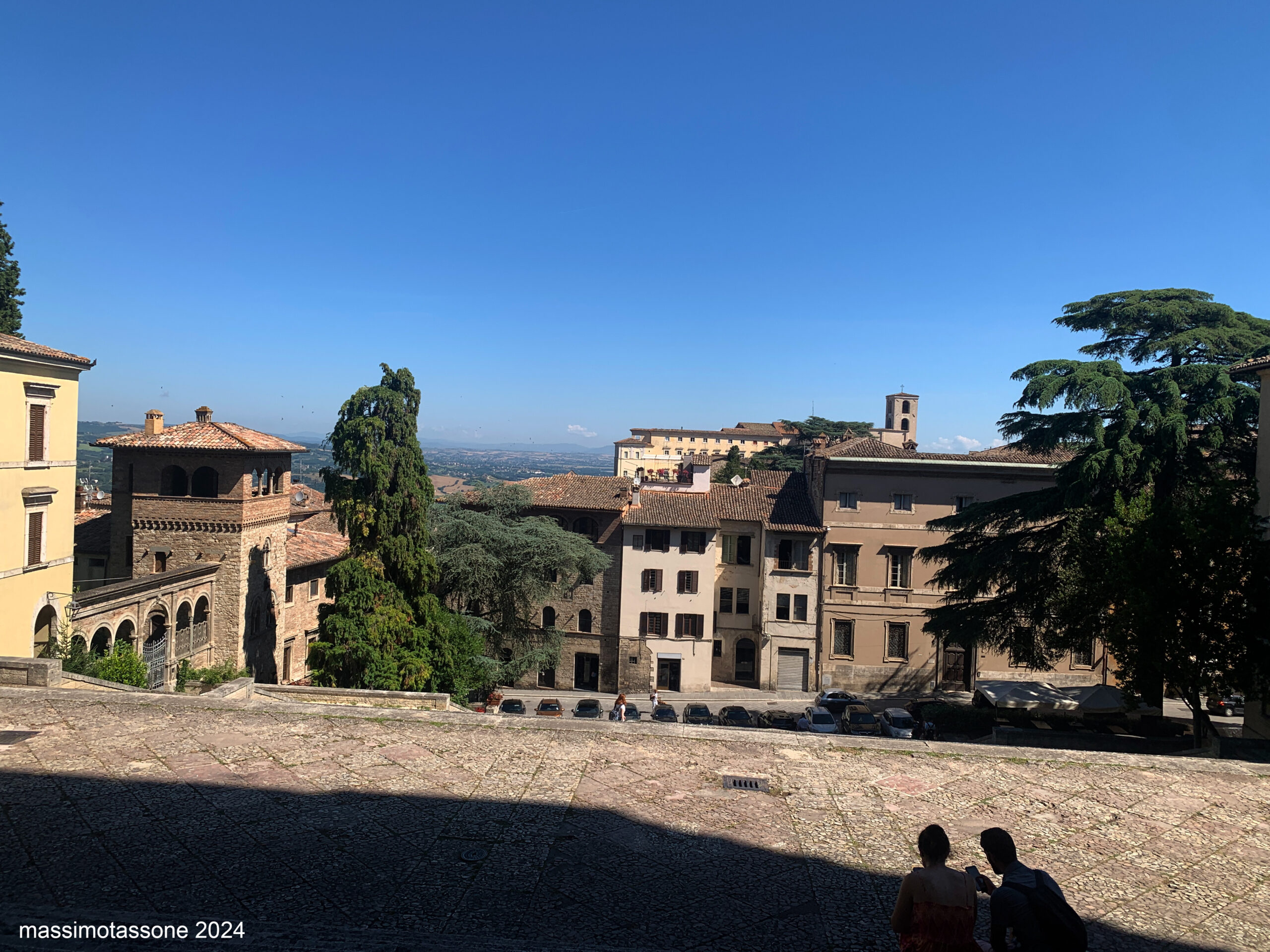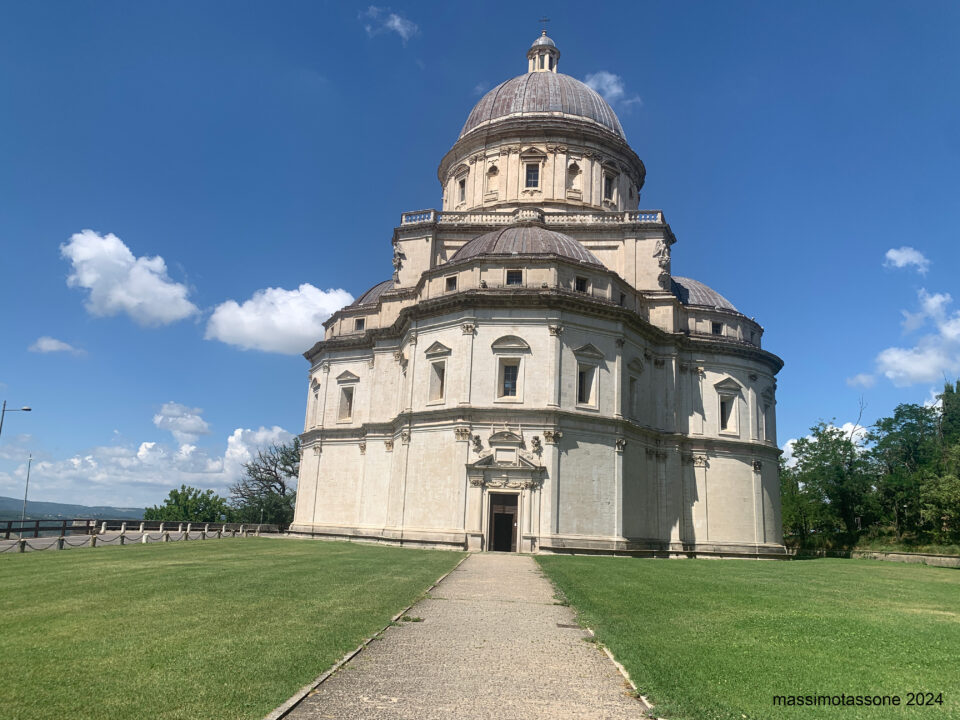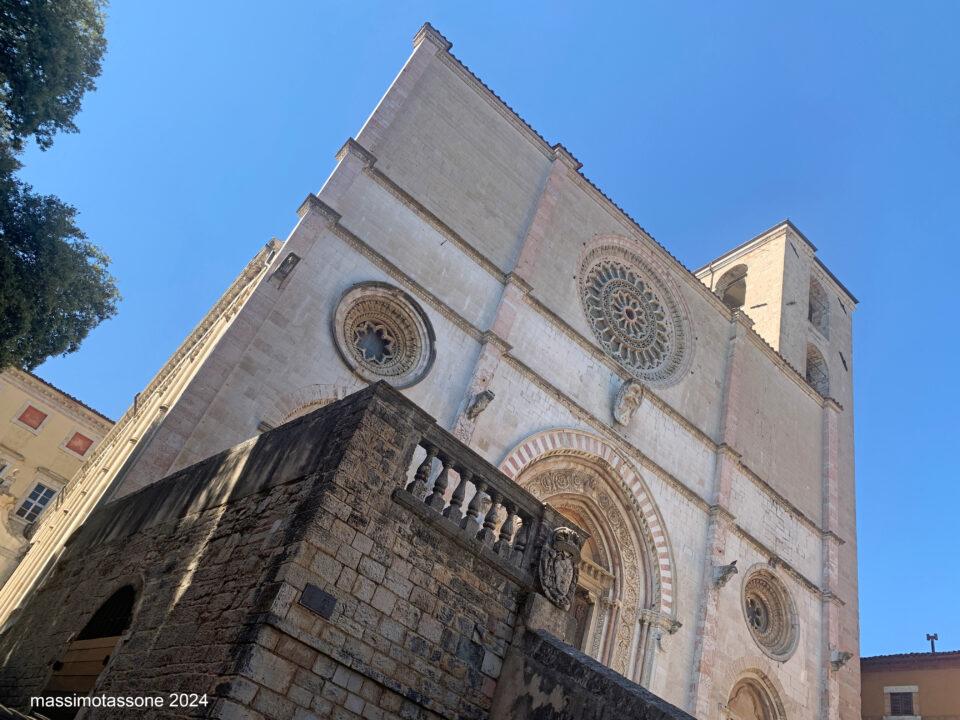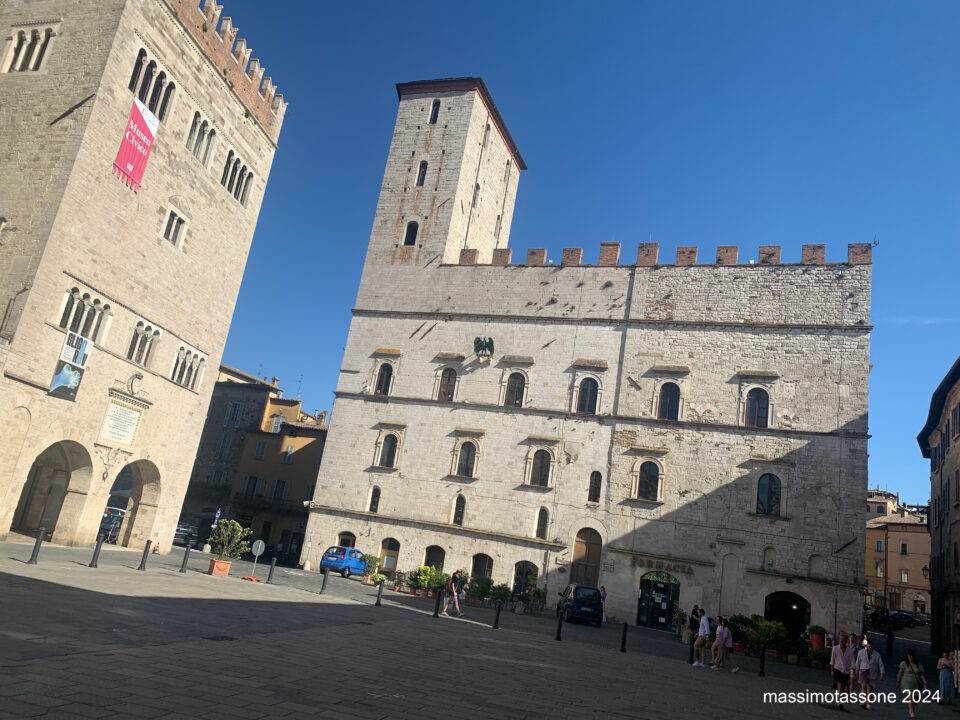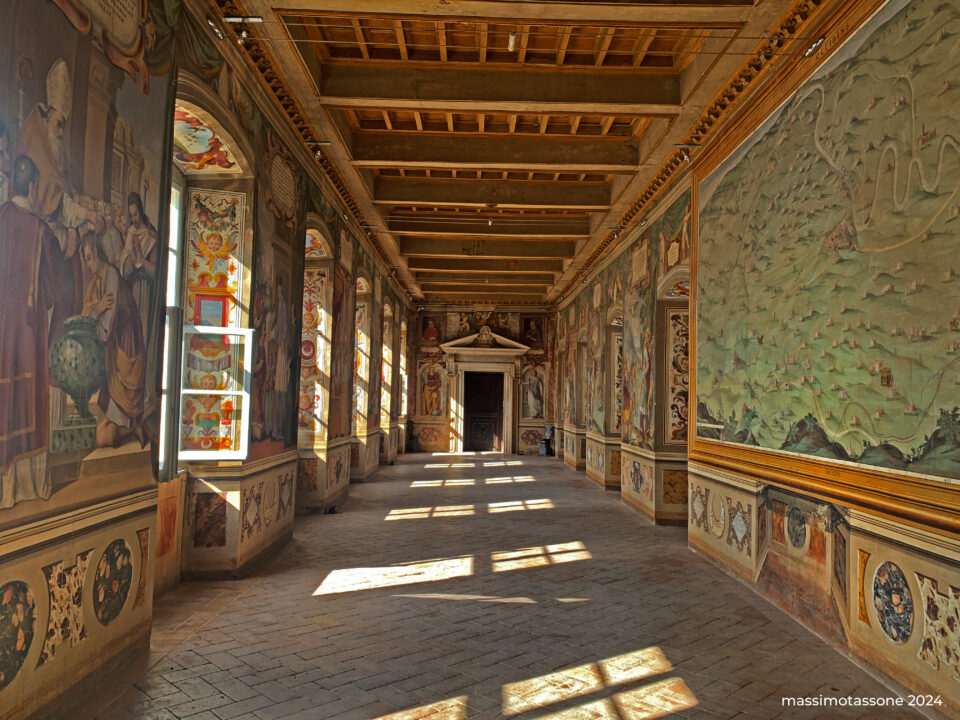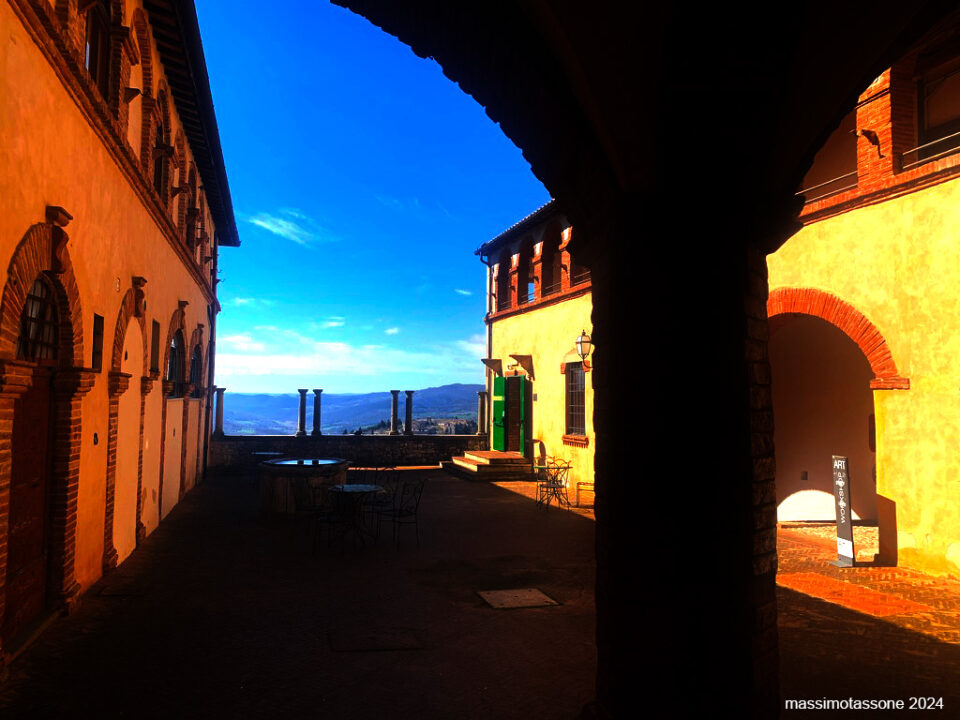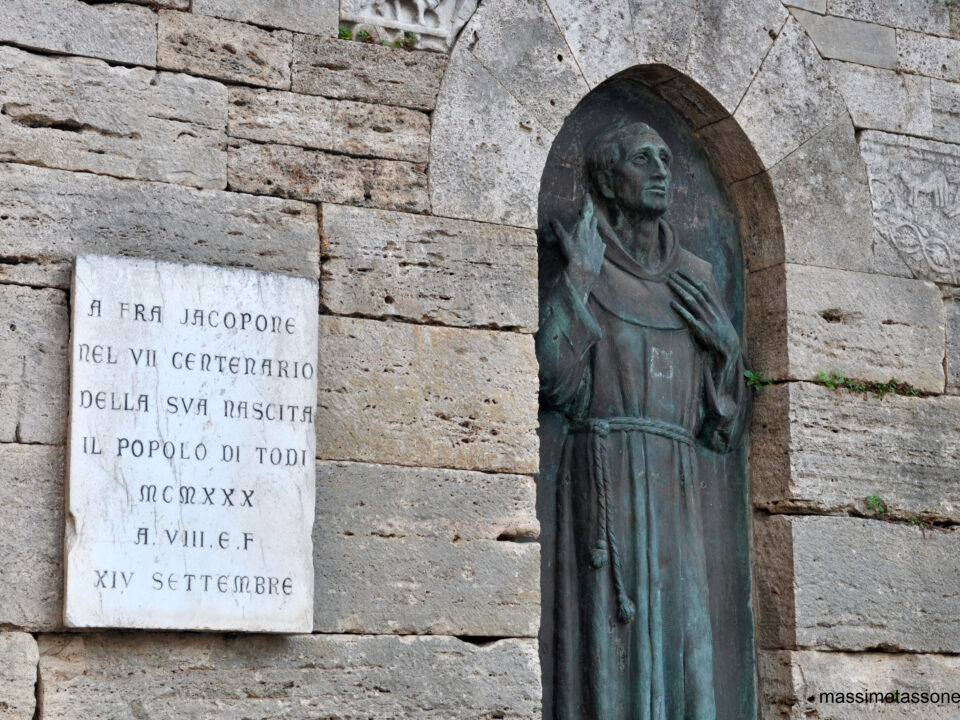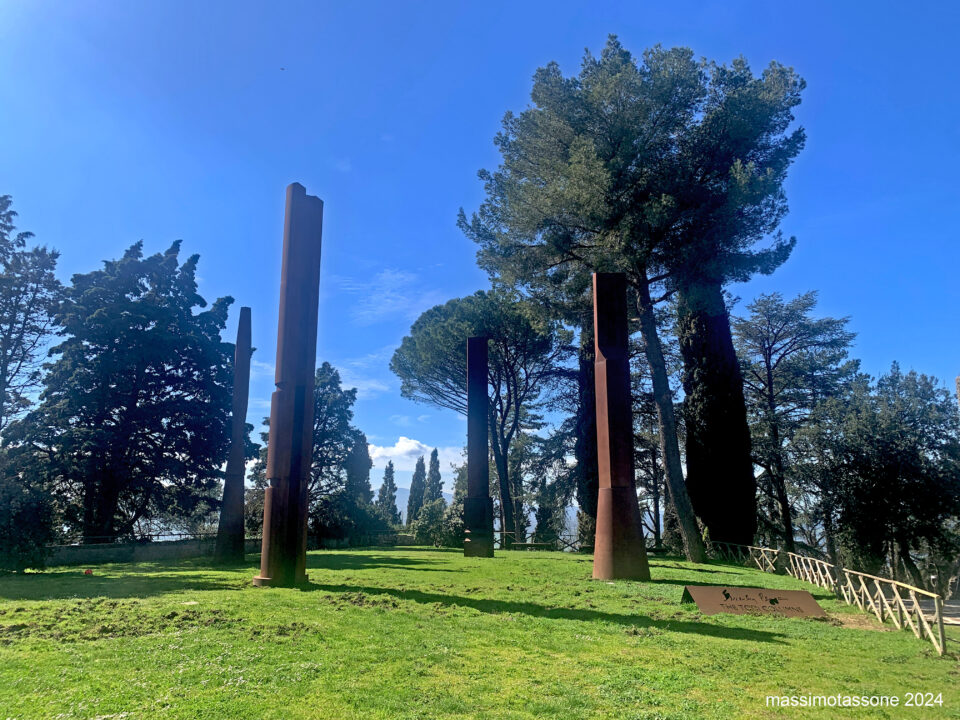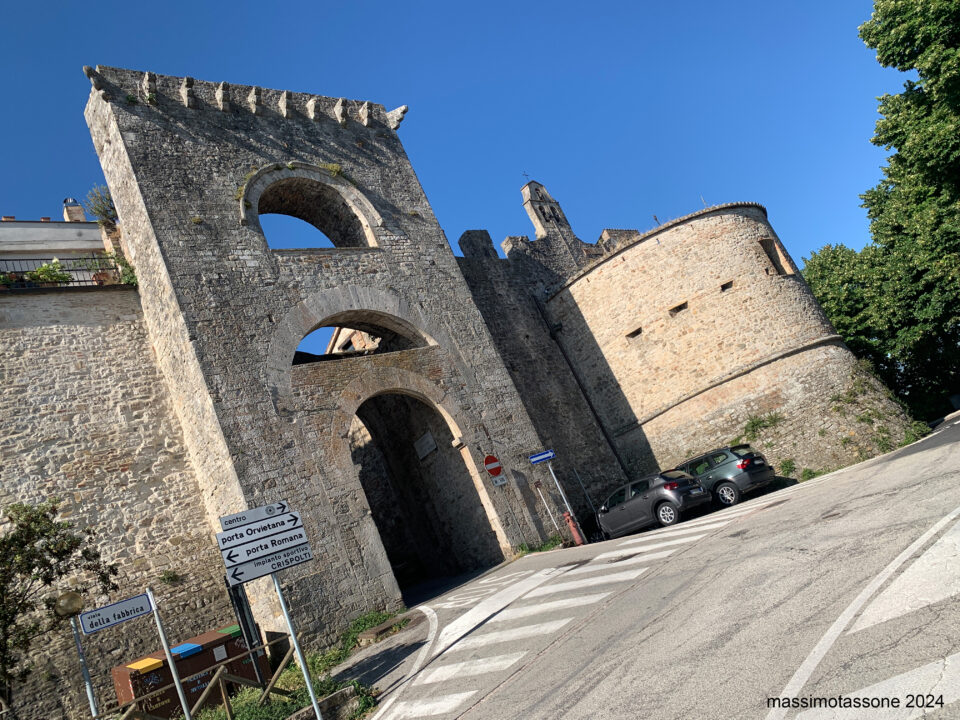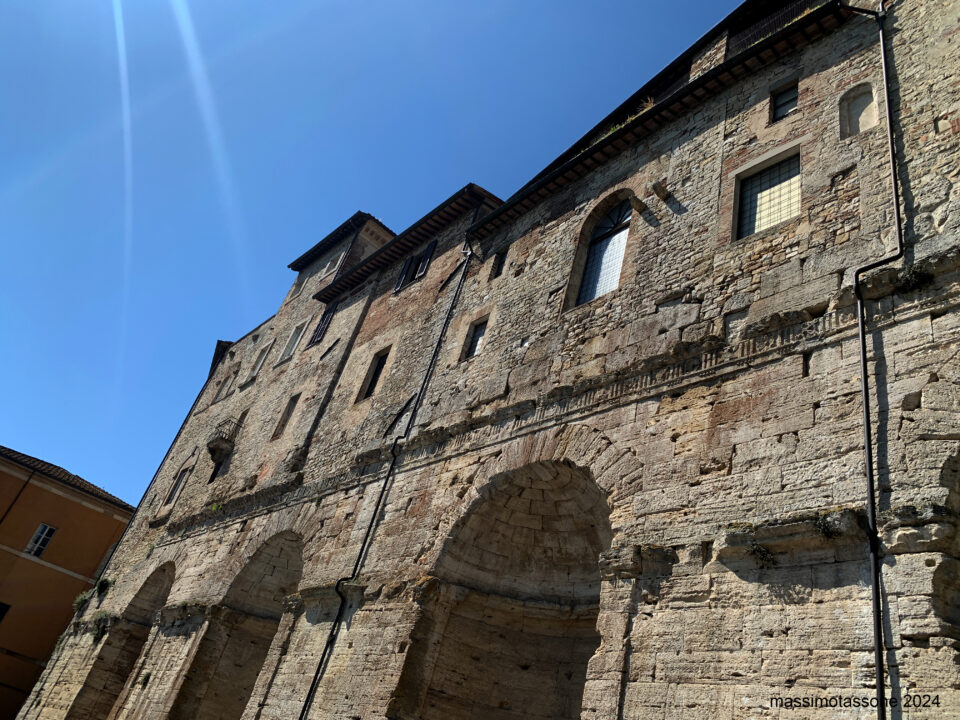The church dates back to the early Christian era (prior to 1198), as evidenced by the lions on the entrance portal, and two objects called pulvini which were transformed into holy water fonts. In June 1292, the church was transformed into the Gothic style, with works that were interrupted only during the plague of 1348, and resumed only in 1405. The funding came from a 2% tax on all internal city entries and transits. The architect in charge was Giovanni Santuccio of Firenzuola.
The Church, or Temple, of San Fortunato is located a short distance from the Rocca, in what must have once been the acropolis of the ancient city of Todi. The present building shows the numerous phases of construction it underwent: from the earlier Etrusco-Roman phase, evidenced by the lions at the entrance and two capitals transformed into holy water fonts, to the first Romanesque phase around 1198, built by Vallombrosan monks, and finally to the definitive Gothic structure, with works starting in 1292, interrupted during the plague of 1348, and completed two centuries later. A significant testimony to this work is the façade, which stands on a monumental staircase that was left unfinished due to the death in 1458 of master Giovanni di Santuccio da Firenzuola, who had been working on the project with the help of his nephew Bartolo d'Angelo. The frequent wars with neighboring towns, especially Orvieto, later drained the communal finances, leaving the church without the funds to complete the work.
The lower level of the façade is divided into three sections corresponding to the three internal aisles, each with its own entrance portal, the most interesting of which is the central one. The decoration includes precious twisted columns and bas-reliefs depicting, from left to right, the Twelve Apostles, various saints (including Degna, Romana, and Cassiano, whose relics are kept inside the church), angels, biblical prophets, San Fortunato, the stigmata of St. Francis, the Annunciation, and the sacrifice of Isaac, all surrounded by symbolic floral motifs such as the vine, symbolizing Good, and the fig tree, symbolizing Evil, as well as the dragon and serpent, symbols of sin.
Inside the church, the space is divided into three aisles, all the same height, with the two side aisles slightly narrower than the central one, following the Hallenkirche model (a hall church). Elegant ribbed columns support the vaulted ceiling, under which are 13 elevated chapels on the sides of the aisles. The fourth chapel on the right houses a fragment of the fresco Madonna with Child and Angels by Masolino da Panicale (1432), while the fifth chapel on the left contains remnants of frescoes from the Giottesque school depicting scenes from the life of Saint John the Baptist. At the center of the church, one of Todi's symbols, stands the statue of Saint Fortunato, with the walnut choir behind it, adorned with beautiful inlays and made by Antonio Maffei from Gubbio in 1590, covering the entire central apse. The crypt beneath the altar contains a single monumental sarcophagus in which the relics of saints Cassiano, Callisto, Fortunato, Romana, and Degna are preserved, while in the adjacent sacristy lies the famous Jacopone da Todi, buried there since 1432. Through the sacristy, access is provided to the bell tower of the church, from which a 360-degree view of the entire city can be enjoyed.



